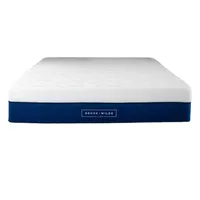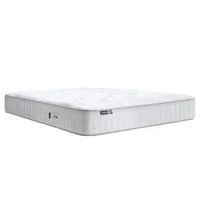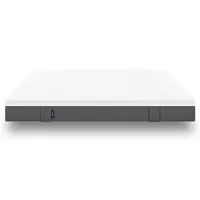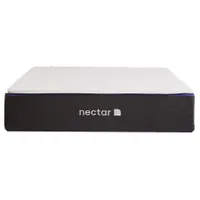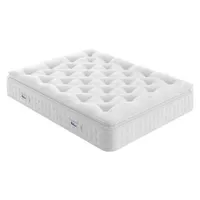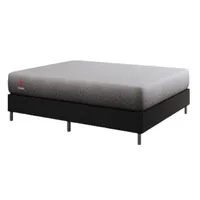The 5 best mattresses to help you sleep better in 2025 and beyond
Discover the best mattress for your sleep needs and budget with our expert guide, featuring full reviews and advice from our resident sleep coach
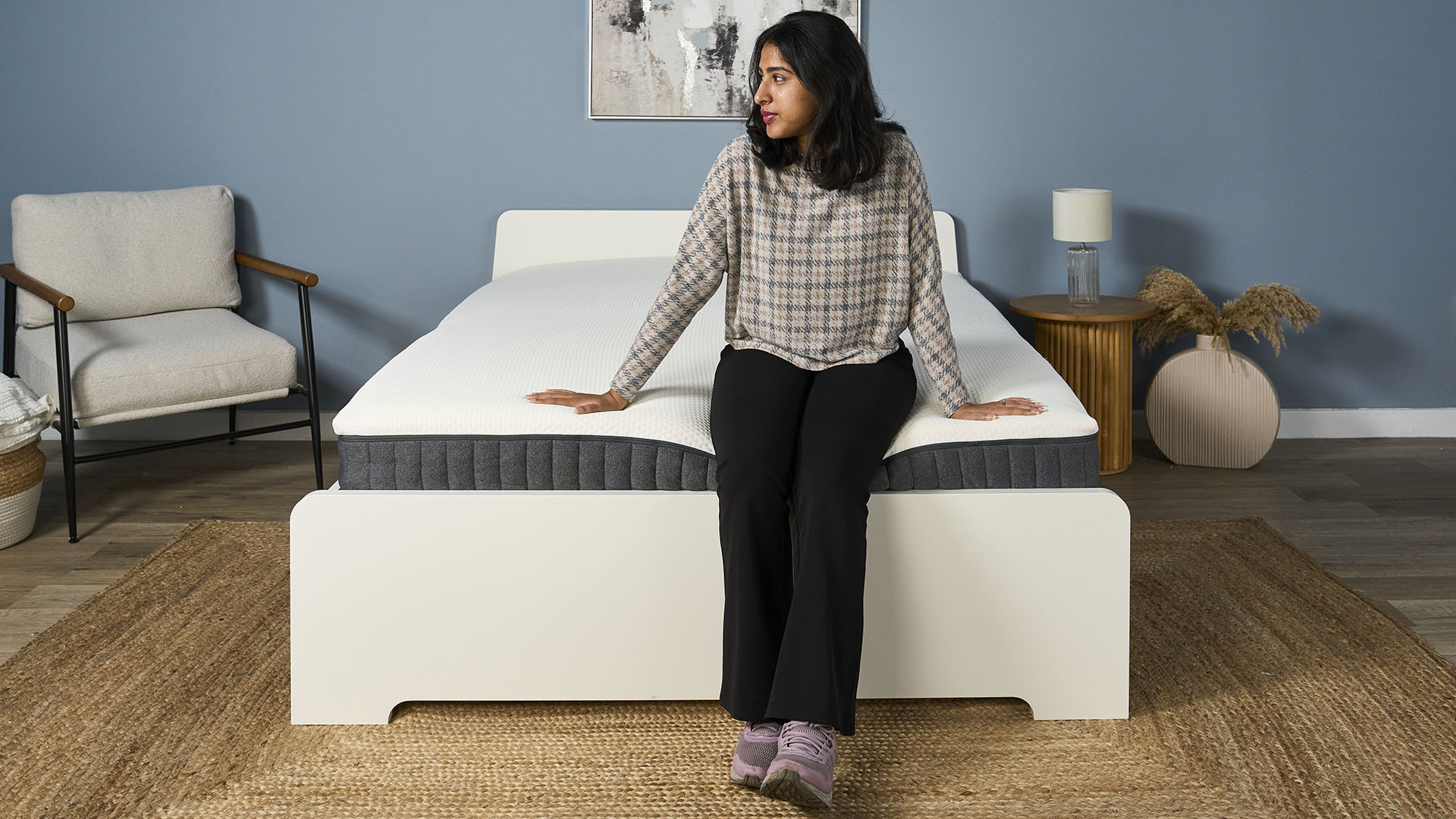
A good night's sleep helps you feel and perform at your best and your mattress is a building block for better rest. On the right mattress you can fall asleep faster and wake up fresher, while the wrong mattress can leave you tossing and turning all night long.
In the past five years our Tom's Guide team has slept on and tested over 120 mattress, from beds in a box to luxury hybrids to the latest in sleep tech. We're currently pushing our mattress review process further than ever, transforming our humble sleep studio into a mattress testing super-lab. This allows us to get deeper under the covers, revealing more objective and subjective data about every mattress we test.
This hands-on review process has helped us to reassess our top rated mattresses, rocketing the Emma Hybrid Airgrid to the place of our favorite mattress in the UK. Breathable, contouring and innovative, it's our number one pick for most sleep styles and budgets.
However, the Emma Hybrid Airgrid faces stiff competition. The Nectar put up a strong fight to take the place of our favorite all-foam mattress, while the luxurious Simba Ultra is a five-star model (with a premium price tag.) With the Black Friday mattress deals here, this is the time to invest in your sleep.
1. The best mattress of 2025 overall
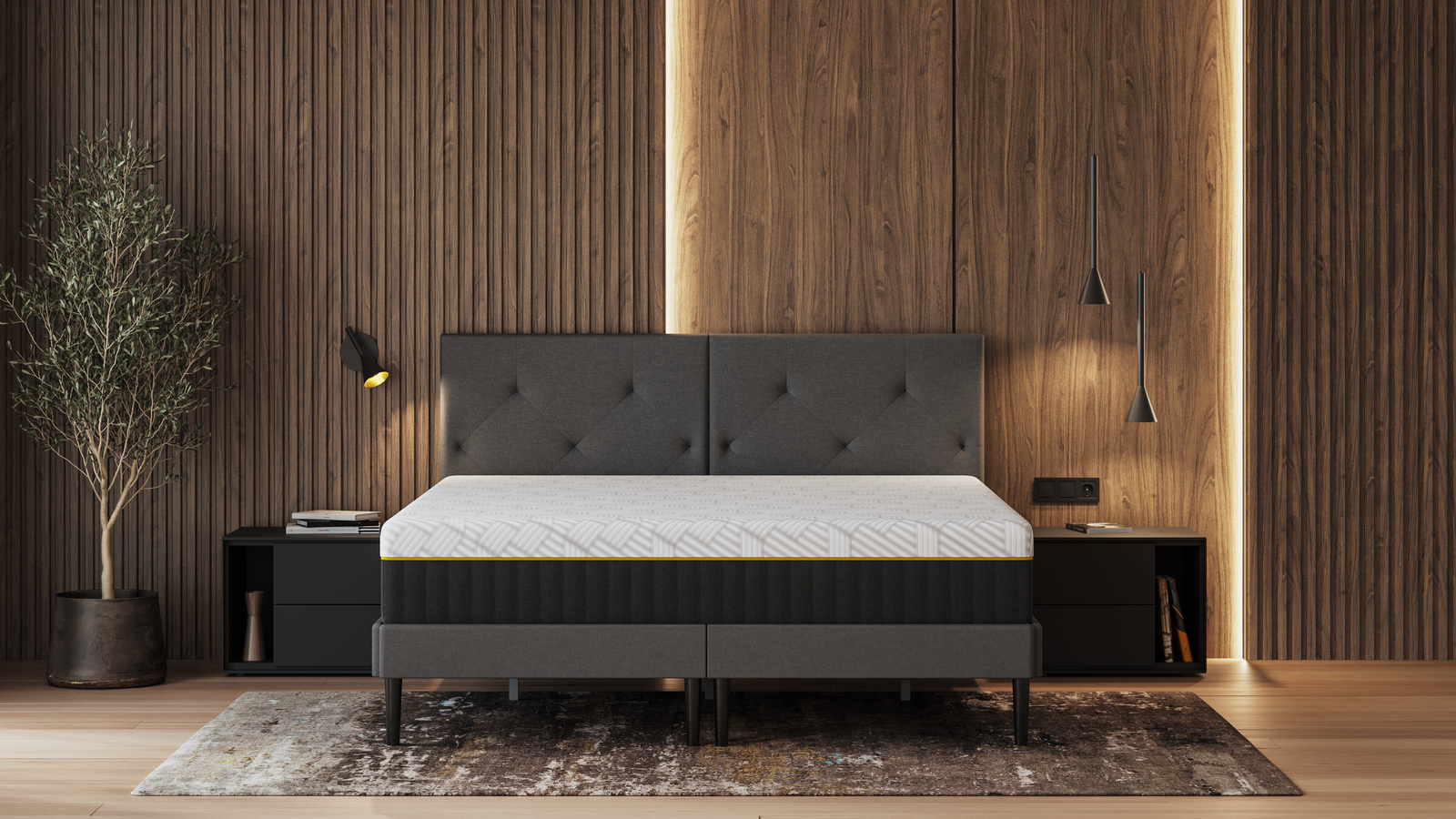

Specifications
Reasons to buy
Reasons to avoid
Quick summary
The Emma Hybrid Airgrid Mattress takes an innovative approach to comfort, as this hybrid bed features springs, foams, and Emma's Airgrid technology, a bouncy and flexible polymer layer that moulds to your body. It's this hyper-elastic grid that propels the Emma to the top of this guide, as alongside adaptive comfort that relieves pressure from head-to-toe, it also enhances airflow, for cooler sleep even on hot nights.
Our review panel loved the feel of the Emma's AirGrid, even if it is slightly unusual. We described it as "weightless", because it's as if you're lying on top of the mattress while sinking into it at the same time. It's not exactly the foam feel of the Nectar but it's not a hybrid bounce like the Origin Hybrid either. But it is fantastic for pressure relief, as you never feel like you're pushing against the mattress. Our side sleeping tester loved the cradled comfort and recommends it for back sleeping too, but stomach sleepers should look for firmer support, such as the Origin Hybrid.
Read what we liked, didn't like, test scores, and how to buy it ▼
The AirGrid technology could have been a gimmick, but Emma uses it to create total body contouring that side sleepers will love.
Our review: in more detail
The Emma Hybrid Airgrid is from one of the UK's most popular bed brands and at full price it is a premium mattress. But in the sale it's a mid-range rival of the DreamCloud. In our opinion, it's worth waiting for a deal, as you can often snag a major price drop.
The Emma Hybrid Airgrid takes top place in this guide thanks to that Airgrid technology, a flexible and responsive layer that delivers that "floating" feel. So what does the AirGrid do? First and foremost, it bends to meet the body wherever you touch the mattress, creating an adaptive support without any sink. This cradling is comparable to the Nectar, but the Emma Hybrid Airgrid has a softer overall feel.
The Grid also allows air to circulate and our testers agree the temperature regulation is excellent. If you're a hot sleeper seeking a softer mattress, this is a top performer. The bouncy feel makes it easy to change positions, but the Airgrid's geometric design also absorbs motion well. If you share with a restless partner, you shouldn't feel them move on the Emma Hybrid Airgrid.
But it's not all about the Airgrid, as this 27cm tall mattress also contains layers of pressure relieving foam and a supportive spring base. Our testers loved it for side and back sleepers but stomach sleepers should seek something firmer, such as the Origin Hybrid Mattress — the Emma's cradling feel is likely to lead to some pressure build up at the lower back.
The Emma Hybrid Airgrid's biggest weakness is its edge support, as we found there was some sinkage at the side of the mattress, making it hard to balance on the perimeter. If you like to push against the edge of the mattress to boost you out of bed in the morning, we recommend the DreamCloud Luxury Hybrid instead.
Overall, the Emma Airgrid is a unique take on comfort that delivers deep pressure relief.
What we like about it...
Why you can trust Tom's Guide
✅ Immense pressure relief: Side sleepers need cushioned relief at the shoulders, hips, and knees (that's where the body presses into the bed). The Emma Hybrid Airgrid delivers that by the bucket, cradling the touch points so you don't wake up with achy arms and numb hips.
✅ Breathable build: The open spaces in the AirGrid (plus the breathable springs) allow for air to easily circulate and cool. Our testing panel stayed a neutral temperature even on warm nights, and the moisture wicking UltraDry cover keeps things fresh.
✅ Absorbs motion well: We awarded the Emma Hybrid Airgrid full marks for motion isolation, which is slightly surprising considering this is a bouncy bed. However the AirGrid, combined with dense foams beneath, trap movement before it travels.

What we don't like about it...
❌ Too soft for stomach sleepers: If you lie on your front you probably won't get to enjoy the 'weightless' feel of the Emma Hybrid Airgrid, as this soft bed lacks the lumbar support a stomach sleeper needs. The Simba Hybrid Ultra has better support without a mega firm feel (but at a significantly higher price.)
❌ The edges are comparatively weak: Support is generally good across the Emma Hybrid Airgrid, but our testers found themselves sinking when they sat on the side of the mattress. The DreamCloud Luxury Hybrid mattress is another good option for side and back sleepers with stronger side support.
Features | In brief | Score |
|---|---|---|
Support and comfort | A medium-soft mattress, but the supportive base holds the body in alignment. However, it's too soft for most front sleepers. | ★★★★ |
Pressure relief | Exceptional pressure relief, our testers found the multiple foam layers and AirGrid contour to the body to evenly distribute weight. | ★★★★½ |
Temperature control | Remains cool overnight, particularly the cover which is chill to the touch. | ★★★★½ |
Motion isolation | Some of the best motion isolation in this guide, which is particularly surprising considering this is a bouncy bed. | ★★★★★ |
Edge support | Average with some definite sink at the sides. It's out performed by rival the DreamCloud Luxury Hybrid. | ★★★½ |
Build quality | A durable build that should last for several years, although the finish doesn't reflect the premium price. | ★★★★ |
When, where, and how to buy
You can purchase the Emma Hybrid Airgrid Mattress online direct from Emma or from third-party retailers. Buying from Emma typically nets you better benefits, including a 10-year guarantee and 200-night trial.
However, while Emma mattress sales are a common occurrence, discounts on the Hybrid Airgrid are less frequent. It's the most expensive mattress in the line-up and deals are often reserved for the more affordable beds.
But watch out for changing RRPs. We've seen a double priced as high as £2,049 and as low as £999. Keep your focus on the final sale price — around £806.40 for a double is generally a good deal and anything lower than that is a bargain.
If you are hoping to save, it's best to shop during the peak sale periods, such as Black Friday and Cyber Monday. Look out for bank holidays as well (Emma loves a holiday saving.)
While some retail stores do stock Emma mattresses, these tend to be retail-exclusive models. For the Emma Hybrid Airgrid, you have to look online.

I’ve slept on every Emma UK mattress and to me this feels the softest. That means I wouldn’t recommend it to heavy (over 250lbs) back and stomach sleepers, but side sleepers of most shapes and sizes will love the Emma Hybrid Airgrid (plus size side sleepers may need to add a firm topper). As a hybrid mattress it has a bouncier feel than the Emma Original, but it’s also much more expensive. While the Emma Hybrid Airgrid isn’t a proper cooling mattress, it quickly wicks away excess body heat (it’s designed with Emma’s AirGrid tech) and sweat. I also rate the hyper-elastic polymer grid and how it flexes with your every move to contour your body, relieving any pressure points. Side sleepers with hip pain will love it.
Read more: Emma Hybrid Airgrid Mattress review
2. The best budget mattress

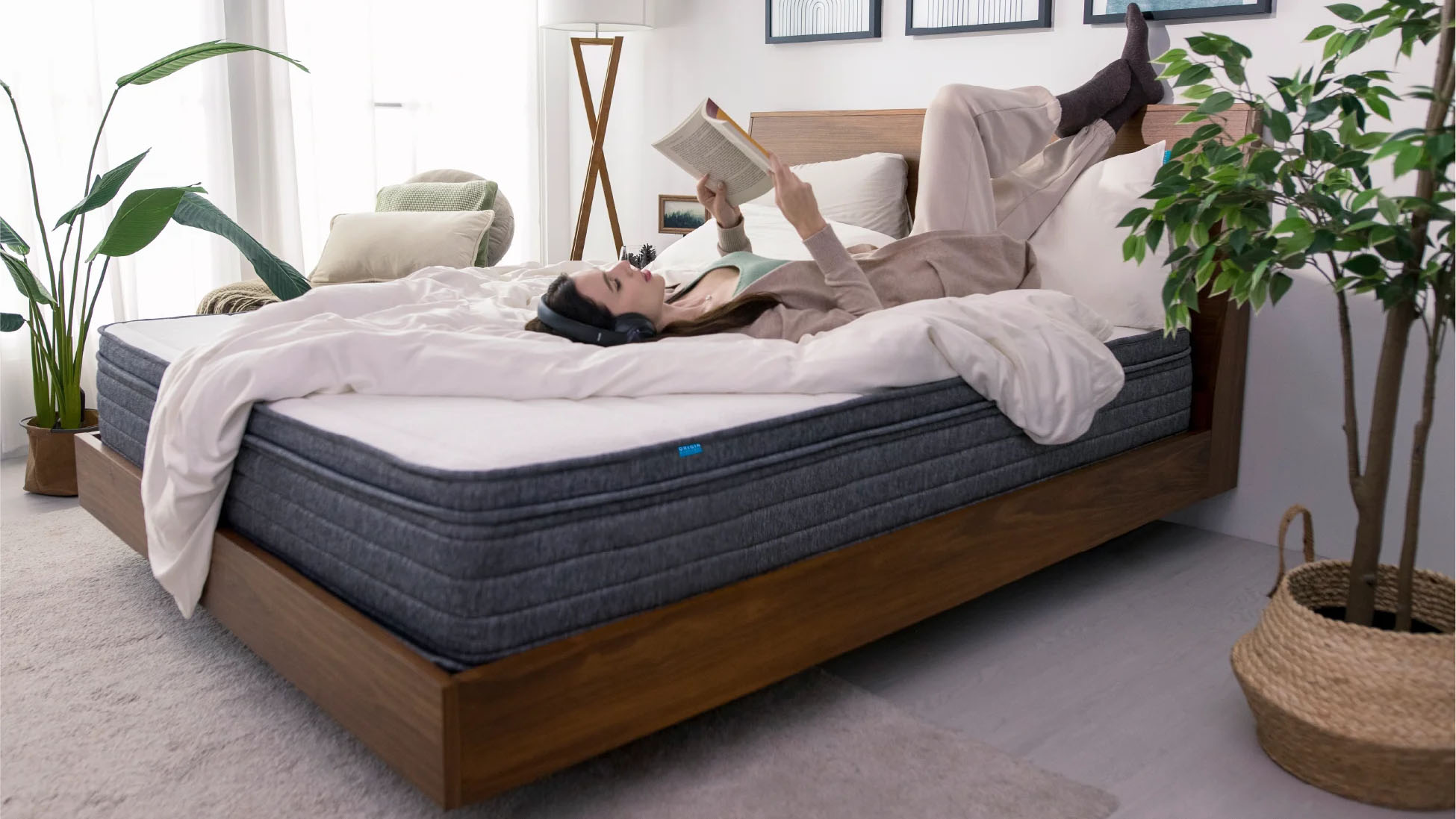
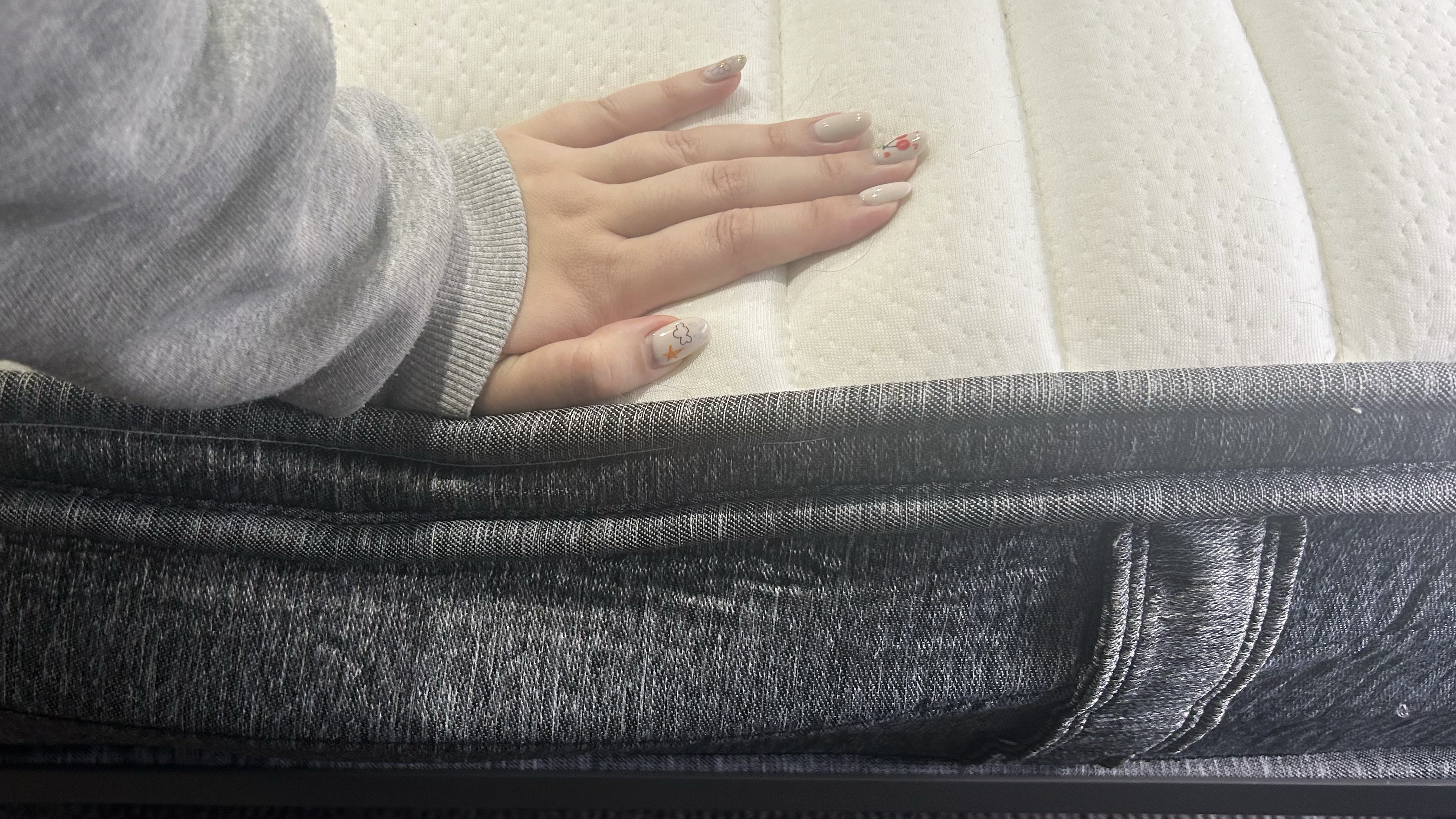
Specifications
Reasons to buy
Reasons to avoid
Quick summary
For those on a smaller budget seeking good sleep, the Origin Hybrid is a reliable and well-built mattress that's often under £350 for a double. The firm feel makes it particularly suitable for stomach and back sleepers, while the breathable build and fantastic motion isolation deliver an all-round performance better than most mattresses in this price bracket.
Featuring a layer of responsive 'HexaGrid' foam plus sturdy springs at the base, our testers found the Origin mattress good at relieving back pain, although those with chronic pain should consider the REM-Fit Ortho 500 Hybrid instead. The subtle cushioning adds gentle pressure relief but most side sleepers will require a plusher design — we recommend the DreamCloud Luxury Hybrid as an alternative (although it comes at a slightly higher price.)
Read what we liked, didn't like, test scores, and how to buy it ▼
Mattresses in this price bracket rarely deliver such impressive support, making the Origin Hybrid excellent value for back and stomach sleepers.
Our review: in more detail
The Origin Hybrid is a hybrid mattress with a difference. Its use of 'HexaGrid' technology — a high-elasticity polymer that's features a grid design for responsive support — adds bouncy body-contouring, gently adjusting to your shape to keep you cradled throughout the night.
Origin describes the mattress as a 'Just Right' 6.5 on the mattress firmness scale, but our testing team agreed it was firmer than that. We rated it an 8, or firm, an opinion largely reflected by user reviews.
This firm and even support makes the Origin Hybrid Mattress a fantastic choice for back and stomach sleepers. We felt no excess sink at the hips, helping reduce pressure on the lumbar region to minimize back pain. While the REM-Fit Ortho 500 mattress might be a better choice for chronic pain, the Origin is great for anyone who finds their softer mattress leads to achy morning.
Lower priced mattresses often struggle in our performance tests (motion isolation, temperature control and edge support.) However, the Origin impressed us, particularly in terms of temperature regulation; our hot sleeping tester described it as "cool throughout the night," even if the Panda Bamboo might be a cooler choice overall
The motion isolation is another strong point, effectively absorbing movement to prevent disruption. However, we found the edge support lackluster — weaker sides reduce the overall sleep surface as you can't stretch out. The REM-Fit 500 Ortho is pricier but much stronger in this area.
Overall, the Origin Hybrid mattress is a good all-rounder for shoppers on a budget... unless you're a side sleeper. A lack of contouring means our testers found lying on their sides uncomfortable. The DreamCloud is pricier but the cushioning means we think it's worth the upgrade for side sleepers. Alternatively, the Emma Original is an affordable foam mattress with ample contouring.
What we like about it...
✅ Firm support for back and stomach sleepers: Our back sleeping lead tester described the Origin Hybrid Mattress as "comfortable and supportive", with the firm feel keeping the body lifted from head to toe.
✅ Lifts and cushions the body to reduce back pain: A combination of gentle contouring and firm support holds the spine lifted and aligned, preventing pressure build-up at the lumbar so you don't wake up in pain.
✅ Budget-friendly price tag: The Origin is an excellent value mattress, delivering impressive support and a good performance all-round at a price tag that shouldn't break the bank (particularly if you can nab a sale.)
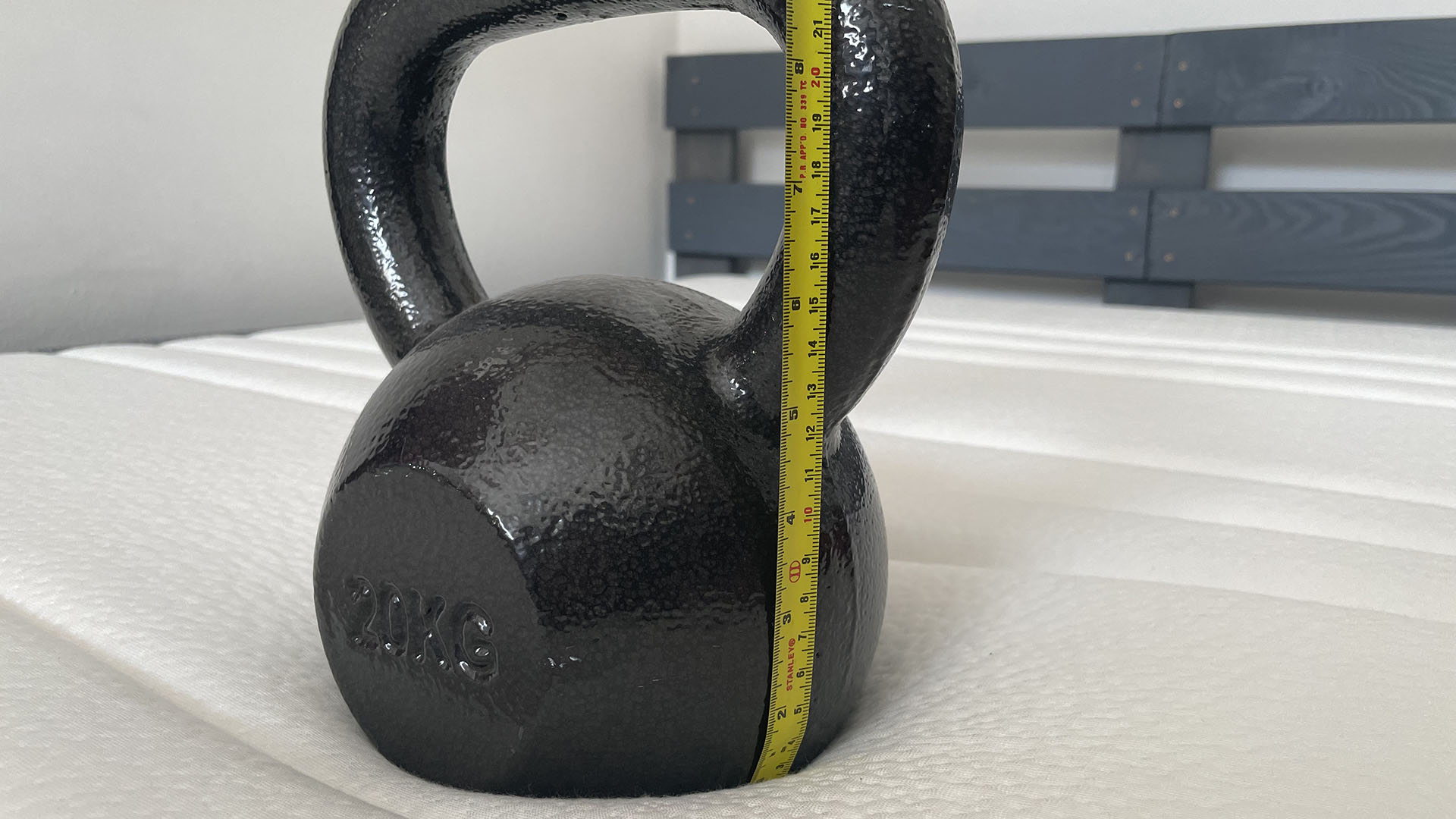
What we don't like about it...
❌ Too firm for most side sleepers: The Origin mattress has some cushioning but side sleepers, particularly those with a light build, are likely to find it too firm at the hips and shoulders. The DreamCloud is a plusher alternative, while the Emma Original is a good option on a budget.
❌ Middling edge support: With weaker support at the perimeter than the centre, you might find yourself rolling off the bed if you stray too close to the sides. The REM-Fit 500 Ortho delivers much more stable side support.
Features | In brief | Score |
|---|---|---|
Support and comfort | Firm support that keeps the body lifted and is particularly comfortable for back and stomach sleepers | ★★★★ |
Pressure relief | The 'HexaGrid' provides light body contouring to prevent pressure build-up for back and front sleepers, but side sleepers will need more sink | ★★★★ |
Temperature control | Our hot sleeping tester enjoyed cool nights on the Origin Hybrid | ★★★★½ |
Motion isolation | Excellent motion isolation, making it a good choice for bed sharers | ★★★★★ |
Edge support | Weaker support at the sides reduces the sleep surface. The REM-Fit has a similar feel and stronger edges | ★★★½ |
Build quality | The Origin has a simple look but a good build quality, so we predict average longevity | ★★★★ |
When, where, and how to buy
The Origin Hybrid mattress is sold online direct from Origin and sales occur throughout the year. The best deal we've spotted is up to 40% off, although this price drop doesn't occur regularly. Look out for free gifts as well: a few pillows can help offset the costs of upgrading your bed.
At full RRP, a single Origin Hybrid mattress is £403, a double £477 and a king £554. But if you're on a tight budget, it's worth delaying your purchase to coincide with a sale. These often occur around bank holidays but keep an eye out around Black Friday for bigger price drops.
Origin also offers a 200-night sleep trial and a 15-year warranty, which are better than usual benefits for the price brackets. Free Next Day Delivery is included and Origin says the mattress will be delivered to the room of your choice, but you'll have to set it up yourself.

The Origin Hybrid mattress's firm support makes it an excellent choice for back and stomach sleepers, particularly those who want better sleep without breaking the bank. With an RRP of £447 for a double but a typical sale price under £350, the Origin Hybrid is also an excellent value mattress — I recommend waiting for a sale to ensure you're getting the most bang for your buck. Most side sleepers are going to need something a bit softer but for a value mattress, the Origin Hybrid ticks a lot of boxes.
Read more: Origin Hybrid Mattress review
3. The best luxury mattress of 2025
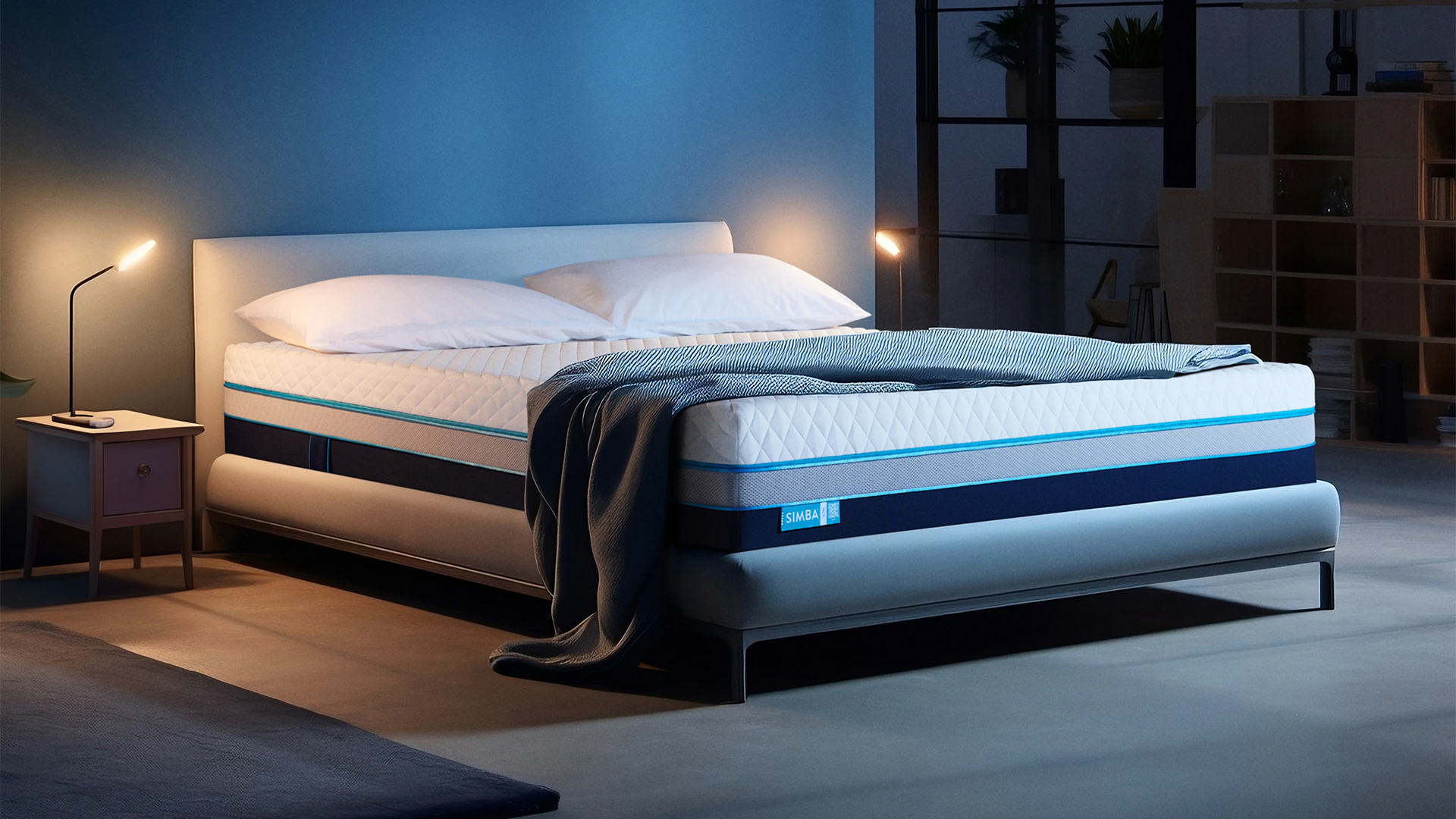
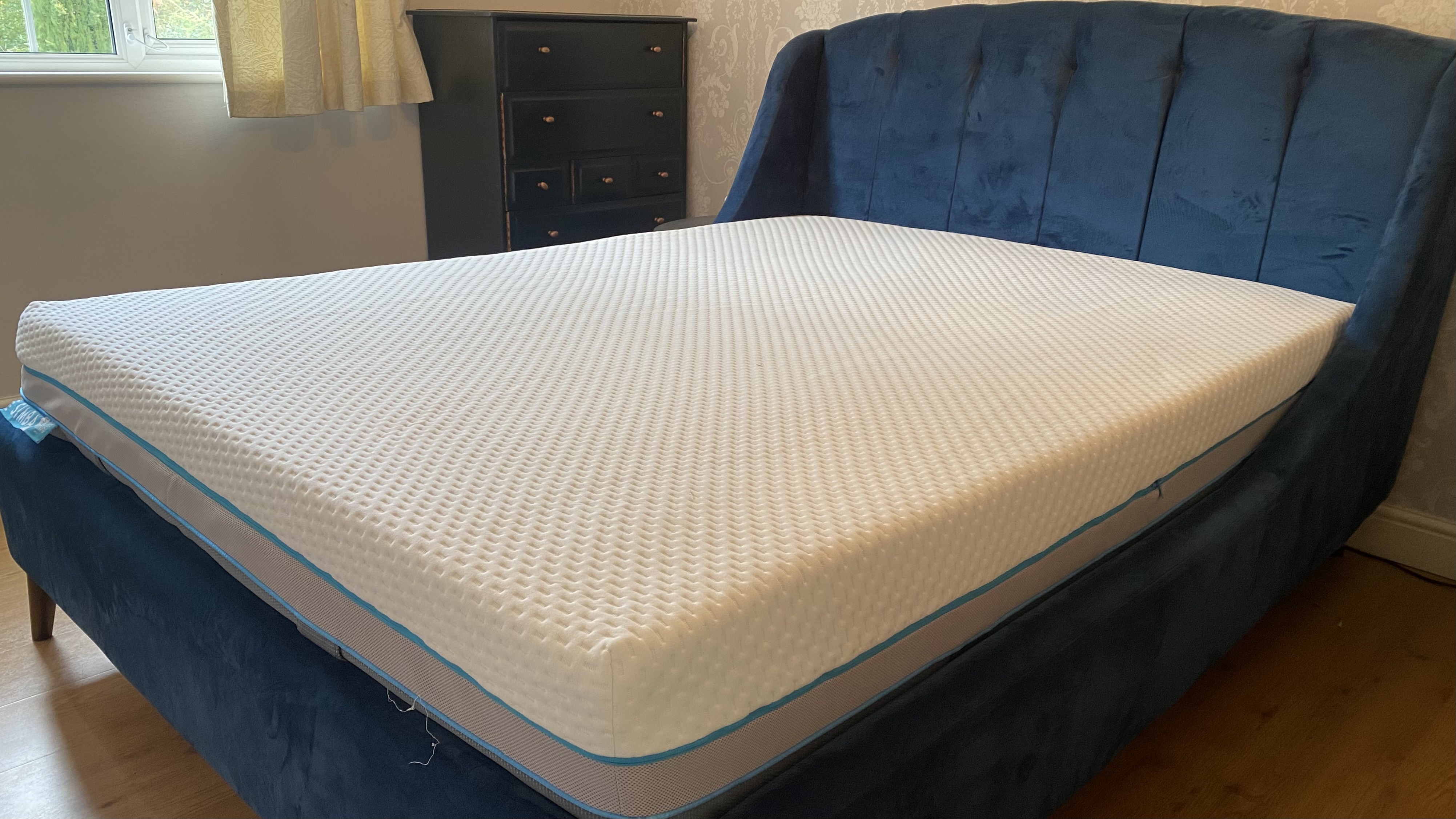
Specifications
Reasons to buy
Reasons to avoid
Quick summary
We loved the Simba Hybrid Ultra Mattress so much we awarded it top marks — a full five stars. It's a true medium-firm bed, with a squishy and pressure relieving surface combined with head-to-toe support.
The Hybrid Ultra is the tallest, most luxurious mattress in the Simba line-up, featuring nine internal layers and the very best of Simba's sleep technology. It's also the most expensive bed in the range (and this guide), with RRPs starting at £1,699. That's a lot of money for a mattress. However, this is a bed we struggled to find fault with. It's breathable and cool for hot sleepers, supportive from edge-to-edge, and despite a bouncy finish, bed sharers can sleep soundly without disturbing their partner.
Read what we liked, didn't like, test scores, and how to buy it ▼
The most comfortable mattress we've slept on, the Simba Ultra Hybrid proves it's worth the price tag... if you can afford it.
Our review: in more detail
The Simba Hybrid Ultra Mattress is a luxury bed from one of our favorite sleep brands. It's also the priciest bed from Simba and a competitor of the Bridgwater Dunpillow Latex Mattress from legacy sleep brand Relyon.
So how does the Hybrid Ultra justify the expense — and our five-star review? Luxuriously thick (at 34 cm tall it's at the top end of mattress thickness), the complex build encompasses two layers of Simbatex foam, two layers of mirco springs, a further two taller spring layers, plus stabilizing foams, and a top layer consisting of wool, bamboo, charcoal, and cooling kapok.
It's a complex build and the result is a mattress thats comfortable from the very first night. Our testing team described it as a "true medium-firm", sturdy from edge-to-edge but with a squishiness that adds plenty of pressure relief. We liked it for every sleep position, and the responsive foam makes it easy to move around in the night.
While the Simba Hybrid Ultra doesn't quite 'mould' to your shape, it gently adapts to the body. (For more of a 'hug' feel, consider the Emma Hybrid Airgrid.) It does spring back into place quickly to ensure you never lose comfort and despite this bounciness, our testers were impressed with the motion isolation. If you share with a restless partner, you should sleep through their movement.
We awarded the Hybrid Ultra top marks for temperature regulation, finding it stayed a neutral feel throughout the night. It even measures up to our favorite cooling mattresses, like the Panda Bamboo and the Emma Hybrid Airgrid. Overall, an incredibly comfy night for all sleep styles but at a price tag off-putting for many shoppers.
What we like about it...
✅ Suits all sleep styles: Every member of our testing panel praised the Simba Hybrid Ultra, finding it suited front, side, and back sleeping positions. No matter how you drift off, the Simba Hybrid Ultra should keep you comfortable.
✅ Stays a comfortable temperature all night: Simba uses a "cool-touch" Stratos cover, combined with a breathable FusionCool layer plus plenty of springs to keep air circulating and prevent overheating.
✅ A luxurious build and feel: The Hybrid Ultra has a sumptuous thickness and is packed full of cutting-edge materials. The overall effect is one of immediate comfort and total luxury.
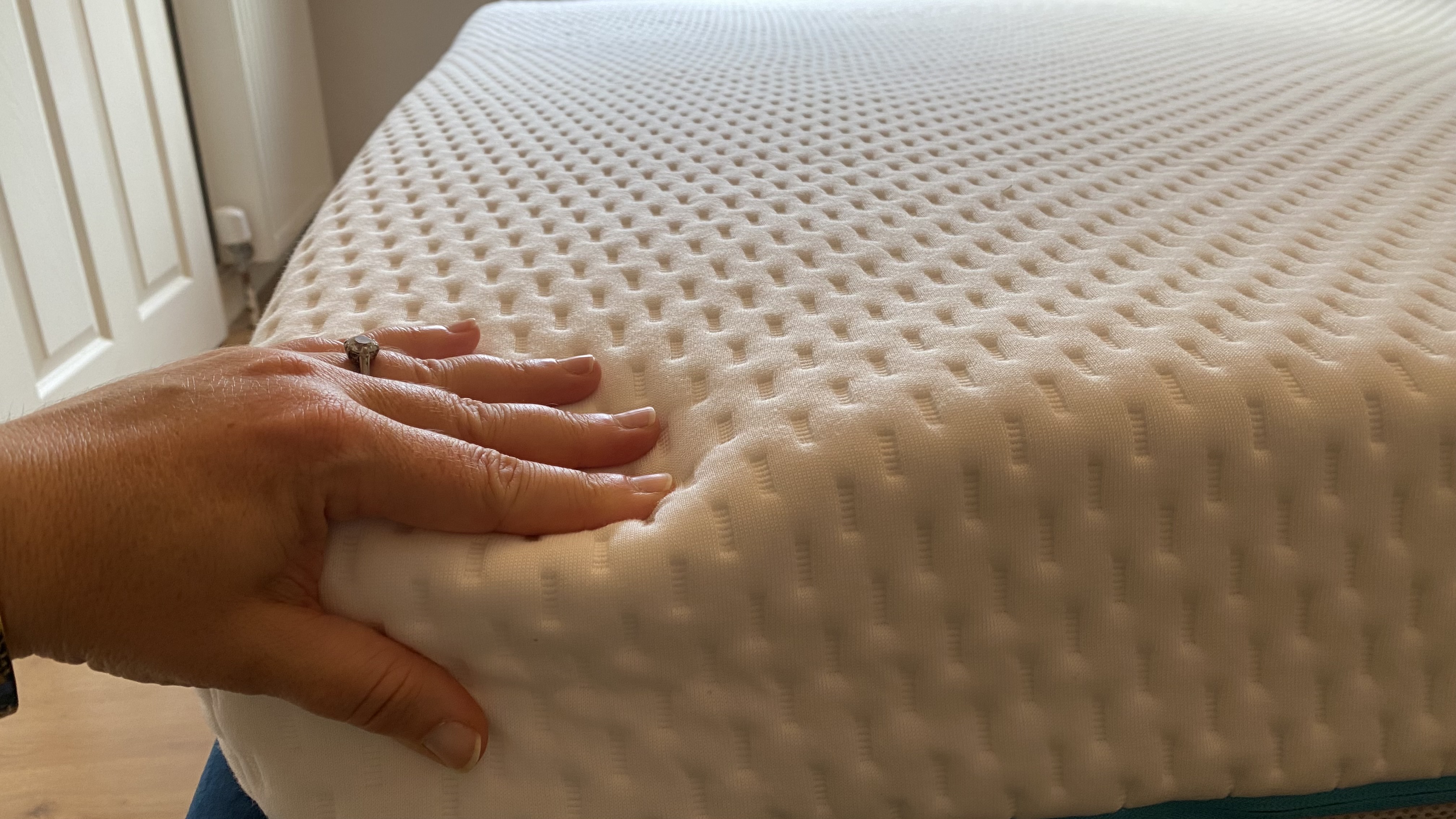
What we don't like about it...
❌ An ultra premium buy: The Simba Hybrid Ultra is the most expensive mattress in this guide, and even on sale it's expensive. The Emma Hybrid Airgrid is a more affordable option that delivers a similar weightless comfort (although it's less comfortable for stomach sleepers.)
❌ Less luxurious finish: It's not that the Hybrid Ultra looks bad, it's just that the packaging doesn't quite convey the premium build. If you want a premium finish, the much cheaper DreamCloud Luxury Hybrid wouldn't look out of place in a hotel.
Features | In brief | Score |
|---|---|---|
Support and comfort | Fantastic for pretty much every body type and sleep style, plus comfortable from the very first night. | ★★★★★ |
Pressure relief | A satisfying "give" that gently contours to your body to relieve pressure where you push into the bed. | ★★★★★ |
Temperature control | Stays a neutral temperature overnight, our testers never overheated. | ★★★★★ |
Motion isolation | Our testers found the mattress a touch bouncy, but could sleep soundly when sharing a bed with a restless sleeper. | ★★★★½ |
Edge support | Excellent, we felt supported even when sitting on the edge. | ★★★★½ |
Build quality | A fantastic build that feels packed full of quality materials. Expect a good longevity. | ★★★★★ |
When, where, and how to buy
The Simba Hybrid Ultra Mattress is available both in-store and online. Simba stores can be found across England, although Simba recommends if you want to test a specific bed, call up before hand to check it's in stock.
Online, the Hybrid Ultra can be purchased direct from Simba. Simba offers a 200-night trial and a 10-year guarantee which are fine for a mattress but we might expect slightly better at this price. (The Nectar and DreamCloud come with a year long trial and a lifetime guarantee.)
Simba mattress sales are semi-frequent, but that doesn't mean you can always find a deal on this specific model. And sometimes instead of discounts, Simba offers free gifts. Good news if you need to replace your whole sleep setup, less appealing if you're happy with your pillows.
If you aren't in a rush to buy, patience can pay off with a big saving (we've seen up to 30% discounts.) But we recommend checking regularly, as deals can come and go fast. Bank holidays are often the best time to save, while Simba sometimes reserves its biggest price drops for Black Friday.
You can also find the Simba Hybrid Ultra on certain third-party sites, including Land of Beds. If Simba isn't running a sale, it's worth checking third-party sites for a discount. However, keep in mind these retailers don't always honour the benefits you'd get shopping direct.

Simba is one of the best mattress brands in the UK and the Hybrid Ultra hits that sweet spot between performance and price. You get a lot of mattress for your money here, including a cooler sleep surface and excellent pressure relief. It has a good bit of bounce to it, while still isolating motion transfer from your partner for an undisturbed night’s sleep. The Simba Hybrid Ultra isn’t cheap at £2,299 for a double, but I think it’s well-worth the investment — and hopefully we'll see another Simba mattress sale soon (they tend to be semi-frequent, if unpredictable). For a cheaper alternative, I recommend the original Simba Hybrid (from £649) – it isn’t as polished and the edge support is weaker, but it’s a good affordable hybrid for couples and teens.
Read more: Simba Hybrid Ultra Mattress review
4. Best memory foam mattress
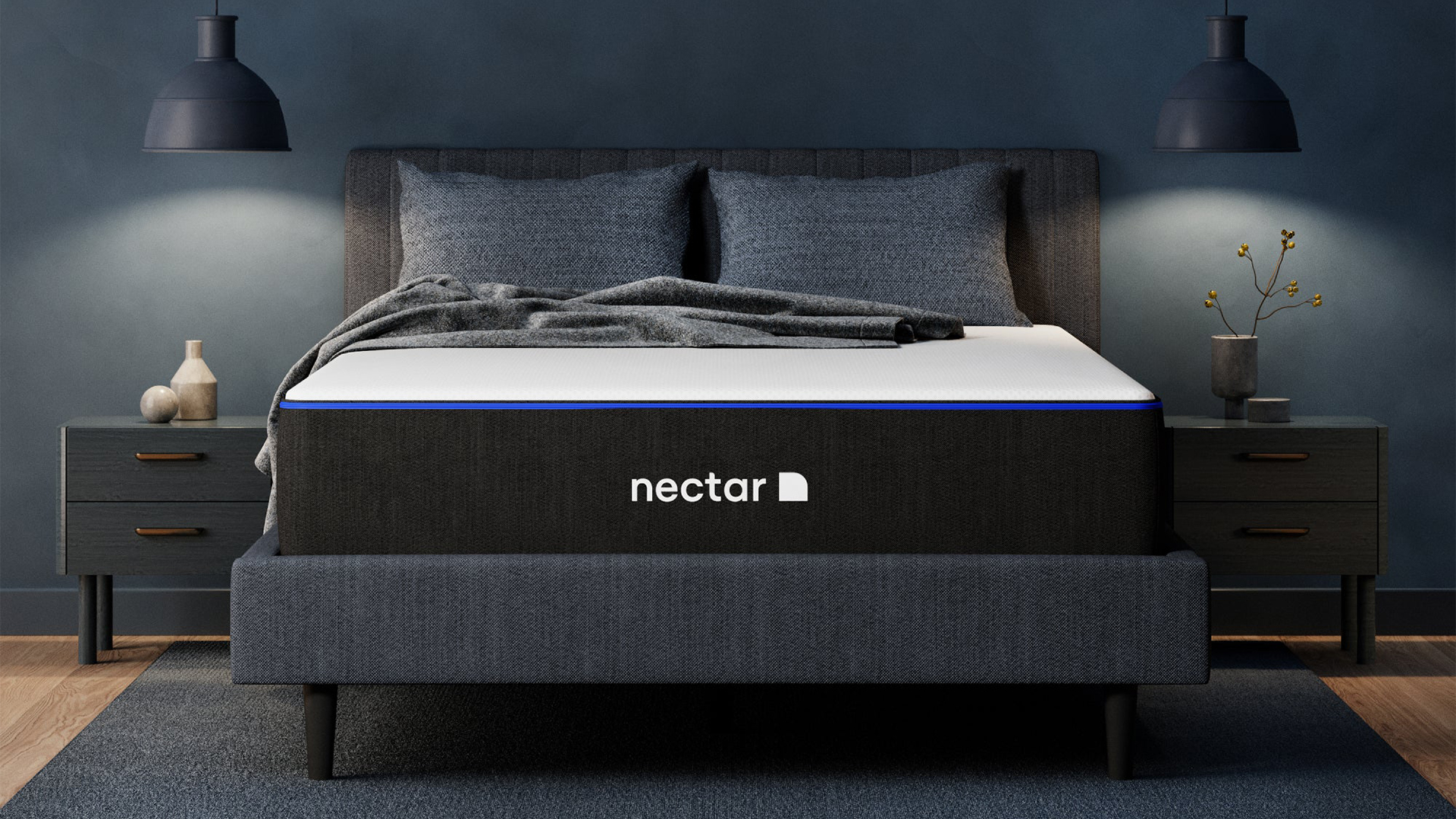

Specifications
Reasons to buy
Reasons to avoid
Quick summary
Offering excellent value for money, the Nectar Memory Foam Mattress is a well-priced bed from one of our favourite sleep brands. The medium-firm feel is comfortable for back and stomach sleepers, but this is a good all-rounder with enough pressure relief to suit most side sleepers.
The Nectar's closest foam rival is the Zoma, but the Nectar delivers more of a traditional foam feel, which is why it's our top memory foam mattress pick. Even though this isn't a bed you sink into, the foams cradle the body while distributing weight across the mattress for superb pressure relief. And the lack of sink means it avoids some of the pitfalls of affordable memory foam beds — like poor temperature regulation. Our testers found the Nectar breathable and although it's not as cool as the Panda, it doesn't overheat, either.
Read what we liked, didn't like, test scores, and how to buy it ▼
The Nectar Memory Foam Mattress delivers a decent performance across the board for those who prefer the feel of foam but don't like being 'trapped' in the bed.
Our review: in more detail
The Nectar Memory Foam Mattress is a close rival of the Zoma and the DreamCloud, but it distinguishes itself from both by delivering more of the classic 'foam' feel.
This still isn't a memory foam with a deep 'hug' (the Emma Original is better for those who like to sink into their mattress), but the upper layers of dynamic foam and memory foam gently cradle the body. Our review panel agreed it "reduced pressure points in all sleeping positions" — with the exception of lightweight side sleepers, who'll need something softer (the Emma Airgrid is a great pick.)
At the base of the mattress is a dense layer of castellated foam, offering zoned support. This tall layer contributes to the medium-firm feel that our panel enjoyed for back and front sleeping, although after a breaking in period it does soften up for side sleepers.
As an affordable all-foam mattress, we were expecting the Nectar to sleep warm. So we were impressed by the neutral temperature it maintained over night. (Truly hot sleepers should consider upgrading to the Panda Bamboo or the Emma Hybrid Airgrid.)
The edge support could be improved (here the Zoma has it beat) but the motion isolation is excellent, simply eating up movement from a restless partner. This top-level motion absorption combined with the comfort for different sleep positions make it a compelling pick for bed sharers.
What we like about it...
✅ Affordable, high-quality build: Nectar is known for offering well built mattresses at a lower price, and the Memory Foam Mattress feels sturdy and durable. It perhaps won't last as long as the Simba Hybrid Ultra, but then again, you're paying a fraction of the price.
✅ Versatile feel: The initial medium-firm feel meant our testers recommended this model for front and back sleepers, but give it a few weeks to break in and we expect side sleepers will also sleep soundly on the Nectar.
✅ Excellent motion isolation: We expect all-foam beds to be good at motion isolation and the Nectar Memory Foam doesn't disappoint. Movement is absorbed and trapped to one side of the bed.
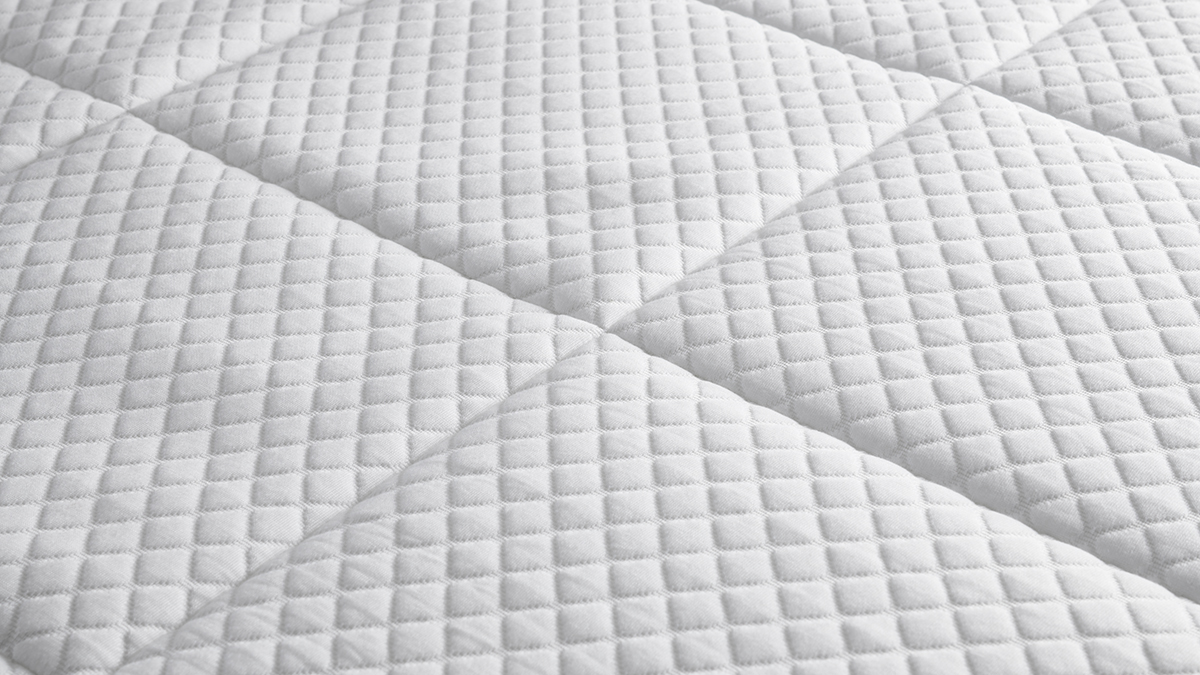
What we don't like about it...
❌ The edges are comparatively weak: You might feel as though the mattress is collapsing beneath you when you sit on the side of the Nectar, as the edge support is a definite weak point. In comparison, the edges of the Zoma are super stable.
❌ Takes a while to break in for side sleepers: While some mattresses, such as the Emma Hybrid Airgrid, are comfortable from the start for side sleepers, the foams of the Nectar take a little time to soften.
❌ Lacks bounce: The Nectar Memory Foam isn't a responsive mattress, as it captures and deadens movement. For a bit of bounce, upgrade to the Nectar Hybrid or consider the DreamCloud Luxury Hybrid.
Features | In brief | Score |
|---|---|---|
Support and comfort | A good, supportive all-rounder that doesn't have the sink of softer memory foams. Our testers enjoyed the gentle cradling feel. | ★★★★ |
Pressure relief | Plenty of cushioned relief at the shoulders and hips, but side sleepers might need to warm up to the feel. | ★★★★½ |
Temperature control | While it's not a 'cool' mattress, it maintains a neutral feel. Better temperature regulation than many all-foam beds. | ★★★★ |
Motion isolation | Excellent, as the dense foams and lack of bounce capture all movement. We recommend this bed to couples. | ★★★★½ |
Edge support | Okay, but the sides lack the sturdy support of other mattresses in this guide. | ★★★½ |
Build quality | A sturdy and reliable build that should last for several years. | ★★★★ |
When, where, and how to buy
Nectar mattress sales used to be as routine as clockwork — the deals rarely (if ever) changed. But in recent months Nectar has started to shake things up. A lot of the time, Nectar sticks to a simple saving. That's money off just by adding the mattress to your cart.
Sometimes, however, Nectar introduces a bundle deal. When this happens, the price of the mattress goes up but, on the flipside, you can claim bedding accessories for free.
Wait — there's a twist. When the free gift deal is running, Nectar sometimes gives you another option: the chance to haggle for a discount. You can forego the freebie and instead engage in a battle of wits with an AI.
During most sales, you can expect to pay £349 for a single, £499 for a double, and £549 for a king (and keep those prices in mind if you need to haggle). These prices tend to stay steady and we don't expect better savings during the major holidays.
Nectar mattresses are also available from third-party sites, including the Nectar Amazon store. Prices here tend to be the same, but you can sometimes find a better discount. However, you might have to sacrifice some extras. And the extras are a real boon to the Nectar Memory Foam Mattress. You can enjoy a 365-night trial and a lifetime guarantee — those are premium benefits for a mid-range bed.

Nectar was one of the first mattresses I ever tested, and I’ve since recommended it to dozens of sleepers searching for a firmer feeling, affordable memory foam mattress in a box. It also regulates temperature well for an all-foam mattress, so hot sleepers (like me) should feel comfortable on it. I think the Nectar Memory Foam is excellent value for money at £499 and a consistently top ranking mattress in our guide, but an even cheaper option is the Emma Original at £399 for a double. I prefer the Emma Original for side sleeping (read my Emma Original Mattress review to learn why), but the Nectar is the better all-rounder and it has a better build quality.
Read more: Nectar Mattress review
5. The best mattress for side sleepers

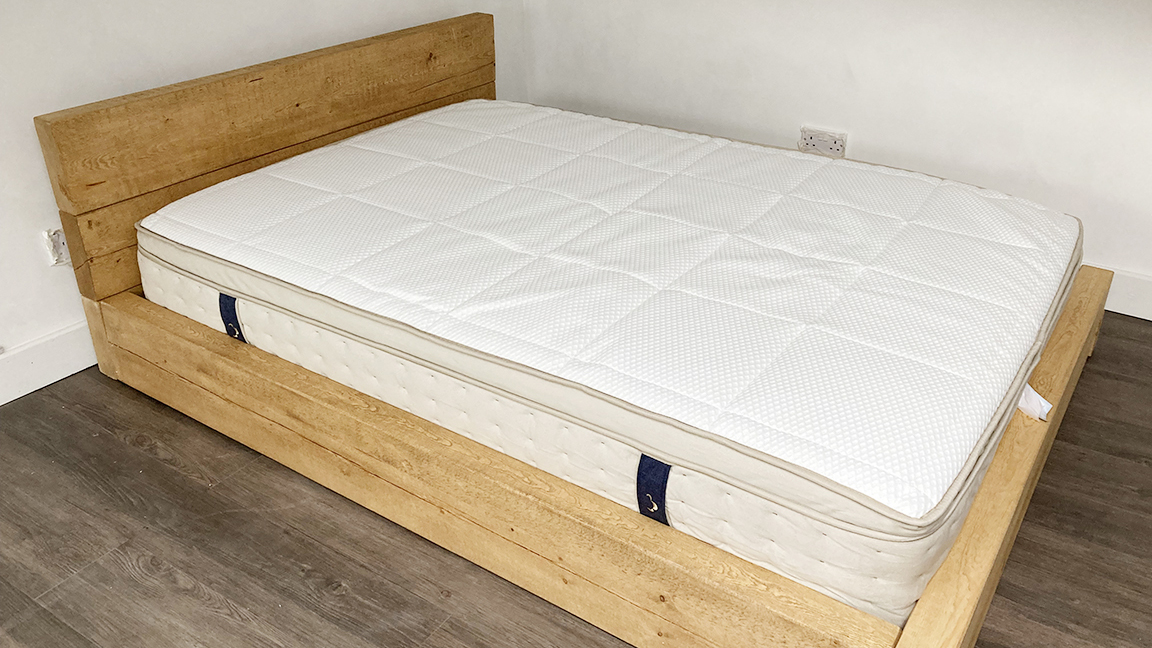
Specifications
Reasons to buy
Reasons to avoid
Quick summary
For hotel-like luxury that doesn't break the bank, look to the DreamCloud Hybrid. This upper mid-range mattress pairs thick body-hugging foams with a supportive base, delivering fantastic pressure relief for side sleepers, wrapped in a luxurious looking package.
For a hybrid, the DreamCloud Luxury Classic has an unexpected body-hugging feel, with the top foam layers embracing the body in a way reminiscent of the best memory foam mattresses, such as the Nectar. We recommend it for side sleepers who want cushioned pressure relief combined with the bouncier feel of a hybrid. If the Emma Hybrid Airgrid caught your eye but you wanted a more traditional mattress feel, the DreamCloud is the way to go.
Read what we liked, didn't like, test scores, and how to buy it ▼
The DreamCloud Hybrid Mattress delivers comfort for side sleepers, plus a luxury finish at a more affordable price.
Our review: in more detail
In terms of price, the DreamCloud is comparable to the Nectar Memory Foam Mattress — in fact, they're both owned by the same brand. For feel, however, the closest comparison to the DreamCloud might be the Relyon Bridgwater, even if this upper mid-range mattress can't deliver the same overall luxury of that premium bed.
However, a quilted cover combined with a "Dream Plush" memory foam layer does give the DreamCloud a similar sink-in pressure relief to the Relyon. It gently cradles the body to reduce pressure at the arms and hips, ideal for side sleepers (and good for back sleepers as well.)
Our review team felt the spring layer beneath was softer than the springs found on other hybrids (such as the Origin), contributing to the medium-firm feel. The support, however, is still excellent, and our testers praised how sturdy the mattress is right across to the perimeter. You can stretch, sit and lie on the sides without worrying you'll roll off.
The DreamCloud performed well across all our tests. The thick foams absorb motion but not heat, creating a breathable bed we recommend for couples. It's not quite a cooling hybrid on par with the Panda or Emma Airgrid, but it should sleep cool enough for most sleepers.
The design has undergone some minor changes since we tested the DreamCloud, but we expect the newer model will deliver a similar performance: exceptional comfort for side sleepers in a luxury package.
What we like about it...
✅ Hotel luxury on a budget: Okay, the DreamCloud might not rival the Four Seasons, but we'd award it at least Three Seasons. The finish is impressive and the combination of soft top and supportive base is similar to the beds you'll find in your favorite hotels.
✅ Outstanding pressure relief for side sleeper: The quilted top and memory foam combination gives the DreamCloud Hybrid a softer feel that moulds to the body almost like an all-foam mattress. Our testers loved the "body-hug".
✅ Strong edges: One of our testers was happy using the DreamCloud as a chair, thanks to the sturdy side support. That's good if you like to sit on your bed to get ready or need to push against the mattress to get up in the morning.
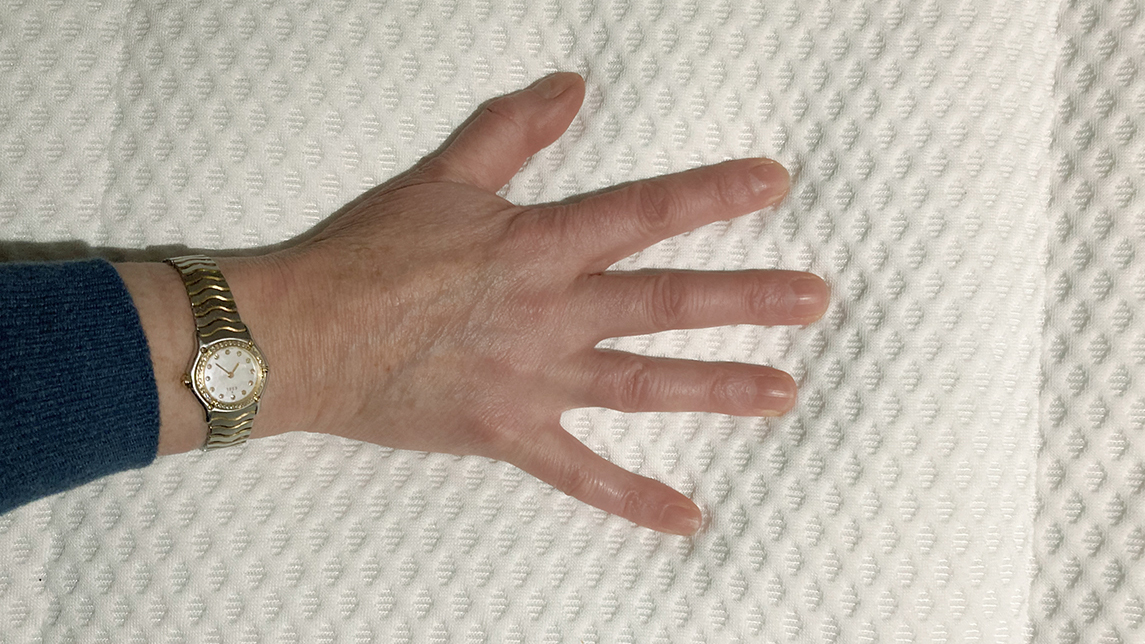
What we don't like about it...
❌ Softer support: Our testing panel felt the spring support of the DreamCloud was softer than other hybrids. If you have a bigger build, or you struggle with back pain, look for a hybrid mattress with stronger springs, such as the Origin Hybrid or REM-Fit Ortho 500.
❌ Might need to be broken in: DreamCloud mattresses sometimes require an adjustment period (we certainly found this when reviewing the US version of this model), and might not be as immediately comfortable for side sleepers as the Emma Hybrid Airgrid.
Features | In brief | Score |
|---|---|---|
Support and comfort | Excellent support for side sleepers and back sleepers, but front sleepers might need something firmer. | ★★★★ |
Pressure relief | A sink-in body hugging feel that's similar to an all-foam bed. Excellent cushioning at the touch points. | ★★★★½ |
Temperature control | Our hot sleeping tester remained a comfortable temperature all night, even if this bed isn't actively cooling. | ★★★★½ |
Motion isolation | Minimal motion transfer, but the all-foam Nectar does out perform it here. | ★★★★½ |
Edge support | The reinforced edge spring unit keeps the sides of the mattress as stable and supportive as the centre. | ★★★★½ |
Build quality | An impeccable finish for an upper mid-range mattress, good enough to rival the premium models in this guide. | ★★★★½ |
When, where, and how to buy
The DreamCloud Hybrid Mattress is only available online direct from DreamCloud. An evergreen DreamCloud Mattress sale ensures you can go ahead and ignore the RRP, as it's never sold at full price.
Expect to pay around £375 for a single, £525 for a double, and £599 for a king. The prices can fluctuate slightly, but they tend to hold steady, even over the major sales days.
DreamCloud has some of the best benefits in this guide (and on the mattress market in general). As well as a forever guarantee, you can also enjoy a 365-night trial. That's a full year to test the bed in your own home to decide if you like it.

If you want a luxury hotel style mattress at home but don’t have the budget, then the DreamCloud Luxury Hybrid is my top recommendation. I loved testing it so much that I bought one for my mother, who has been sleeping on it for over a year. She has arthritis in her spine and wrists, plus chronic back pain from her days as an upholstery seamstress bent over a sewing machine. While I found the DreamCloud Luxury Hybrid too firm at first, it was the opposite for my mother who said she “walked a little straighter and taller” after just one night on the DreamCloud. The lower back support and pressure relief are very good, but sleepers with chronic back pain who prefer a firm mattress should try the REM-FIT 500 Ortho Hybrid instead. Overall, the DreamCloud Luxury Hybrid is fantastic value at £649 for a double with a lifetime warranty and year’s trial.
Read more: DreamCloud Luxury Hybrid mattress review
Highly commended

Specifications
Reasons to buy
Reasons to avoid
Back pain can be a serious sleep disruptor but with the right mattress, you can enjoy better, more restful nights as well as fresher mornings. The REM-Fit 500 Ortho Hybrid Mattress is our top recommendation for sleepers with back pain, thanks to a firm feel and superior support that keeps your spine aligned all night long.
We rated the REM-Fit 500 Ortho eight out of 10 on the firmness scale, which means this is a firm mattress. With little in the way of cushioning, you lie on top of this bed rather than sinking in. This helps the lumbar region maintain alignment, although side sleepers might prefer a mattress with more contoured support, such as the Emma Hybrid Airgrid.
Zoned foam, combined with tall springs, gives the REM-Fit 500 Ortho that highly supportive feel. Our testers found it kept the lumbar region comfortably supported in front and back sleeping positions.
There's little give to the 500 Ortho, and our testers found it had hardly any bounce, either. This 'deadened' feel is excellent for motion isolation (we gave it full marks because it absorbs even significant movement), but if you like some bounce consider the Panda instead.
Highly breathable and with edge-to-edge support, the REM-Fit 500 Ortho Hybrid Mattress delivers the back relief it promises, but the firmer feel won't suit everyone.



Specifications
Reasons to buy
Reasons to avoid
Central heating and night sweats can be a sleep saboteur but the breathable Panda Hybrid Bamboo Mattress uses a mixture of bamboo-infused foams and open springs to keep you cool throughout the night. Our testing team awarded it full marks for temperature regulation, meaning that on cold nights and warm mornings, you maintain a comfortable, even feel.
While hot sleepers might prioritize cooling features, a bed needs more than just a chill feel to make it into this guide to our favorite mattresses. Luckily, the Panda Bamboo Hybrid also delivers impressive full-body support (although those with back pain might want to upgrade to the Panda Bamboo Hybrid Pro, which comes with more orthopedic foams and a higher price tag.) We recommend it to back sleepers and average weight side sleepers — but lightweight side sleepers should consider the softer Emma Hybrid AirGrid, another breathable design.
There are a variety of cooling mattress materials available, from high tech smart cooling beds to the open grid of the Emma Airgrid. The Panda prefers to use the natural breathability of bamboo.
Our lead tester used her hot sleeping husband as a guinea pig during our Panda Hybrid Bamboo Mattress review. He praised the "excellent job" the Panda does as maintaining a cooler feel, ensuring he didn't wake up sweaty or overheating.
The Panda also aced our support tests. Our lead tester experiences back pain but described feeling "fantastically supported" when sleeping on the Hybrid Bamboo (it uses orthopedic foams to create this effect.) It's not quite the firm support of the REM-Fit Ortho 500 but the lifted feel should reduce aches.
We did notice a small amount of motion isolation, which might disturb light sleepers sharing with restless partners. This is due to the overall 'bouncy' feel of the Panda. For more of a 'hug', we once again recommend the Emma.
Also tested and recommended
The mattresses below are the highest performers from all the other mattresses we've tested over the last few years. While these mattresses performed well in our tests, they were ultimately beaten by the ones above. But if you can't find the right mattress for you in our main guide, these are worth considering.
Brook + Wilde Suprema Mattress ★★★★½
The luxurious Suprema is a nine layer made-to-order mattress with three firmness levels to choose from and a more sustainable build. Expect a few days to break it in, but our testers loved the pressure relief. Edge support is a weakness (the Relyon is better if you want a premium bed with strong edges), but the various firmness levels give this mattress an unusual versatility. From £1,295 at Brook + Wilde.
▶ Read more: Brook + Wilde Suprema Mattress review
Levitex Sleep Posture Mattress ★★★★
Levitex only makes the one mattress but it's a good one, an all-foam mattress that uses Levtiex's own take on memory foam to create cool, comfortable pressure relief. It's a good alternative to the Nectar for those who are seeking relief from joint pain, although it's not quite as good value as its cheaper rival. From £590 at Levitex.
▶ Read more: Levitex Mattress review
Simba Earth Escape Mattress ★★★★½
The Earth Escape looks and feels like a luxury bed, with a slight bounce, exceptional support and responsive cushioning. It's best for back and stomach sleepers, lacking the all-round appeal of the Simba Hybrid Ultra, but the eco-build makes it a top pick for anyone after greener sleep. From £1,199 at Simba.
▶ Read more: Simba Earth Escape Mattress review
Emma Original Mattress ★★★★
A soft and squishy all-foam mattress, the Emma Original is ideal for side sleepers on a budget (even if it does have a slight issue with overheating). Emma no longer sells the Original, but you can still find it on several third-party sites, including Argos. From £359 at Argos.
▶ Read more: Emma Original Mattress review
Nectar Premier Hybrid Mattress ★★★★
Sitting at the top of Nectar UK's hybrid line, the Premier Hybrid is a best seller that has a memory foam 'hug' combined with a bit of bounce — for those who want the best of both worlds. However, the support isn't quite as strong as the comparable DreamCloud (#5). From £599 at Nectar.
▶ Read more: Nectar Premier Hybrid Mattress review
Relyon Bridgwater Dunlopillo Latex Mattress ★★★★★
If you want an indulgent bed with ample cushioning, the Relyon Bridgwater is a dream, although an expensive one. For side sleepers we think it's worth the investment, but back and stomach sleepers should opt for the support of the Simba Hybrid Ultra. From £1,099 at Dreams.
▶ Read more: Relyon Bridgwater Dunlopillo Latex Mattress review
Zoma Mattress ★★★★½
The Zoma Mattress is a strong competitor of the Nectar, an all-foam mattress with a responsive feel and ample pressure relief. However, it doesn't quite deliver that classic foam feel. From £399 at Zoma.
▶ Read more: Zoma Memory Foam Mattress review
Best mattress 2025 review scores: at a glance
Mattress | Our score | Header Cell - Column 2 | User score | Header Cell - Column 4 |
|---|---|---|---|---|
Emma Hybrid Airgrid | ★★★★ | Generated from a three week testing period on a super king size. | ★★★★ | Averaged from a handful of reviews at Emma, plus over 30 reviews at MattressNextDay. |
Origin Hybrid | ★★★★ | Generated from a three week testing period on a small double size. | ★★★★½ | Averaged from over 2,600 reviews at Origin — no third-party reviews available. |
Simba Hybrid Ultra | ★★★★★ | Generated from a two month testing period on a king size. | ★★★★½ | Averaged from over 700 reviews at Simba. No third-party reviews — the Hybrid Ultra is available from limited third-party retailers with no reviews. |
Nectar Memory Foam | ★★★★ | Generated from a three-month testing period on a double size. | ★★★★½ | Averaged from over 2,000 reviews at Nectar, plus over 5,000 reviews at Amazon. |
DreamCloud Hybrid | ★★★★½ | Generated over a five week testing period on a double size. | ★★★★½ | Averaged from over 1,000 reviews at DreamCloud — no third-party reviews currently available. |
Mattresses we're testing right now
We're always looking for the best mattresses for every sleep style and budget: that means regularly testing the newest launches and the most popular mattresses. Here's a selection we're currently testing at our Sleep Lab or in our expert's homes:
Simba Earth Apex Mattress: With the Simba Hybrid Ultra Mattress our number one rated bed for most sleep styles and the Simba Earth Escape a favorite for those seeking natural comfort, we have high hopes for the Earth Apex (a luxury upgrade to the Escape.)
SilentNight Premier Inn Mattress 2.0: Do you always sleep better in hotels? Now you can enjoy holiday comfort at home with the Premier Inn Mattress. Early reports say this mattress is great for back sleepers.
Sleepeezee Regency Kenilworth 1600 Pocket Sprung Mattress: Approved by the king (yes, really), the Sleepeezee Regency Kenilworth should offer a royally good night's sleep — our tester can confirm it looks good enough for Buckingham Palace but does it feel good enough for your bedroom?
Eight Sleep Pod 5: If the British heatwaves killed your sleep this summer you'll want to bookmark this page for the latest updates on the Eight Sleep. This high-tech smart cooling system uses a water based system to literally put temperature control in your hands.
How we test mattresses
The Tom's Guide mattress review process is editorially independent and not influenced by third parties. To ensure unbiased product recommendations, we test every mattress in several key areas: pressure relief, support and comfort, temperature regulation, edge support, motion isolation, and durability. For each review, our lead tester spends a minimum of three weeks on the mattress, which is roughly how long it takes the body to get used to a new bed.
Comfort and firmness are subjective, so alongside our lead reviewer, each bed mattress is tested by a trusted panel. This panel is made up of people with different body types and sleep styles, to ensure every preference is taken into account.
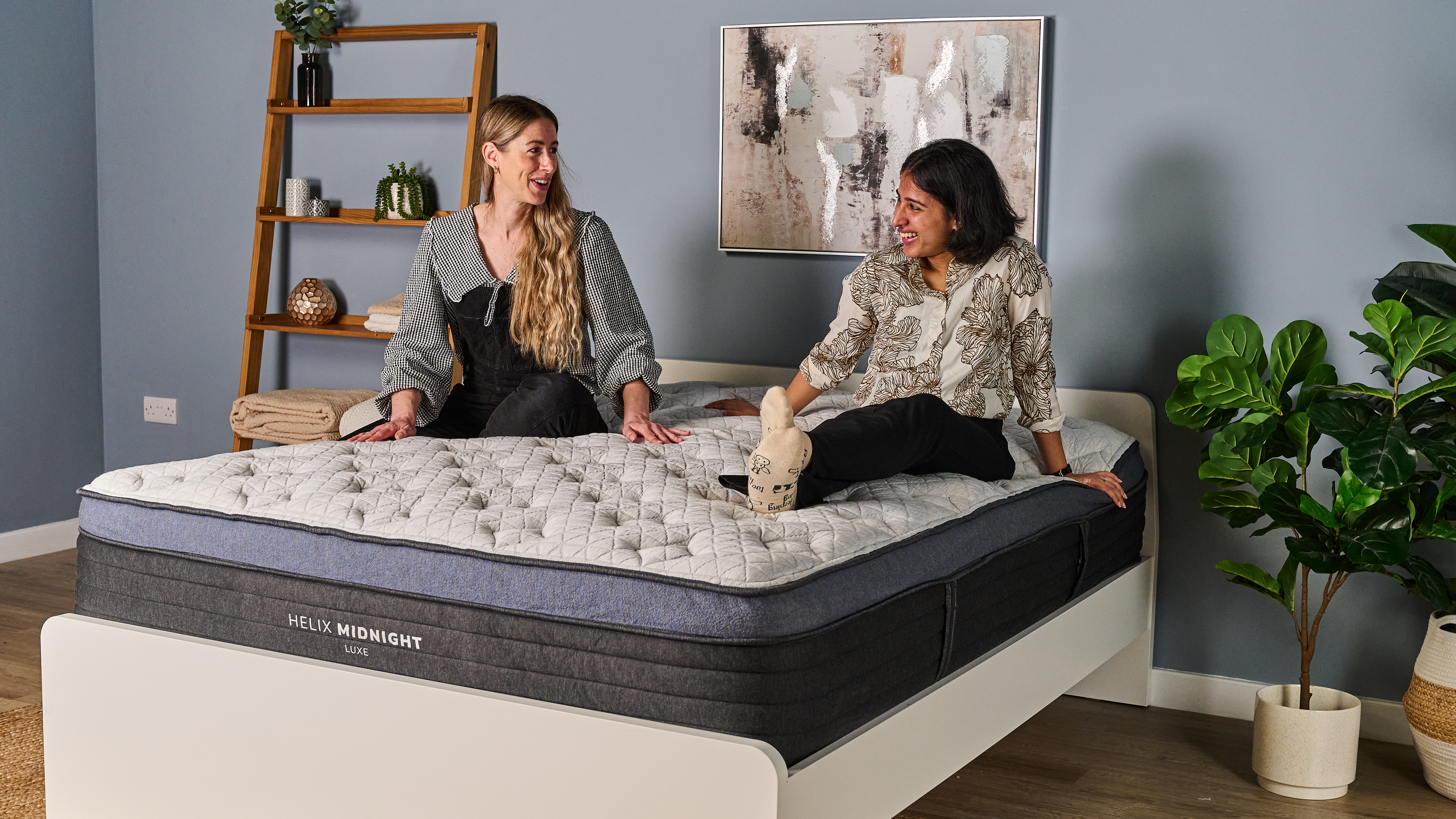
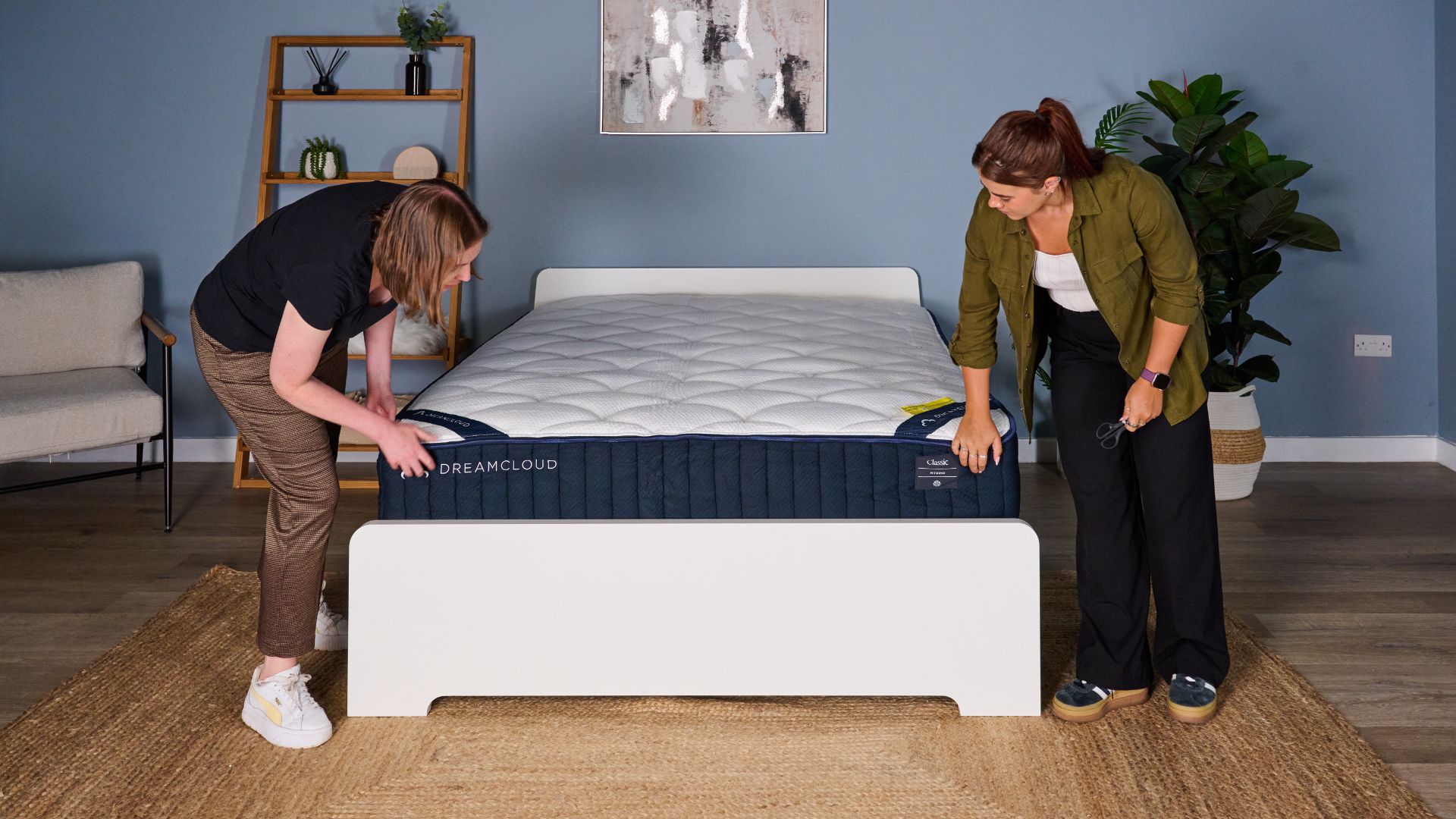
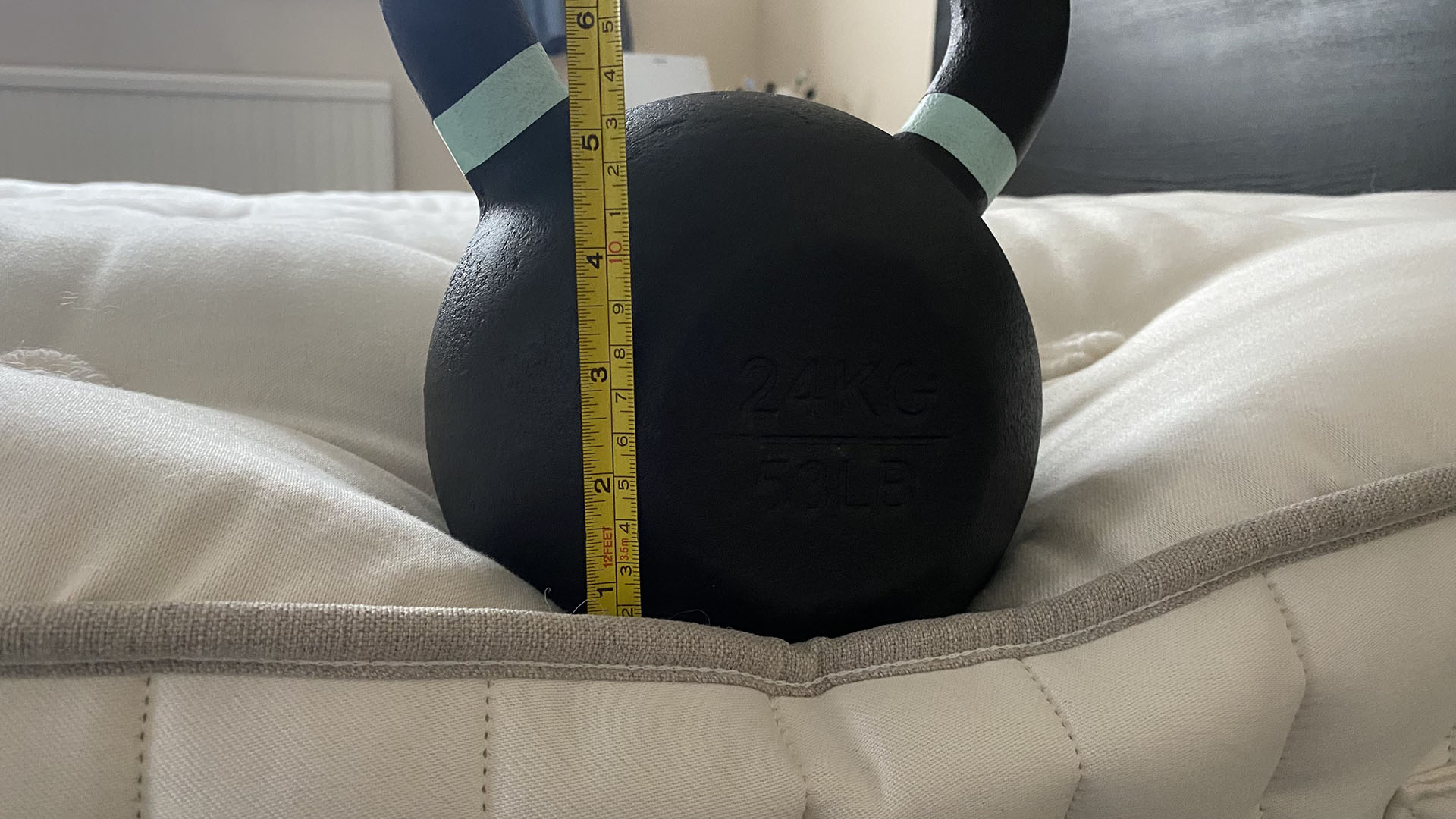
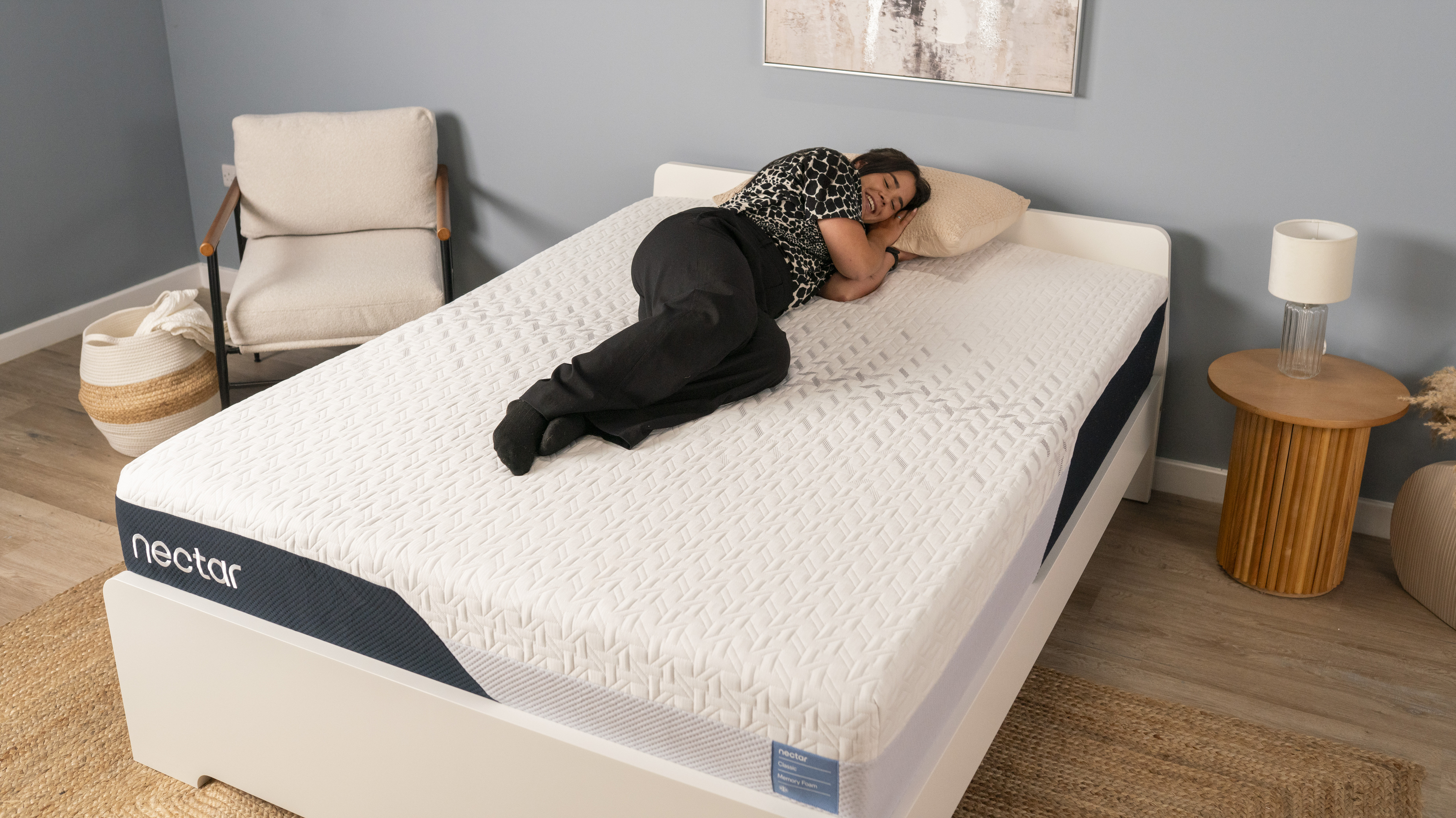
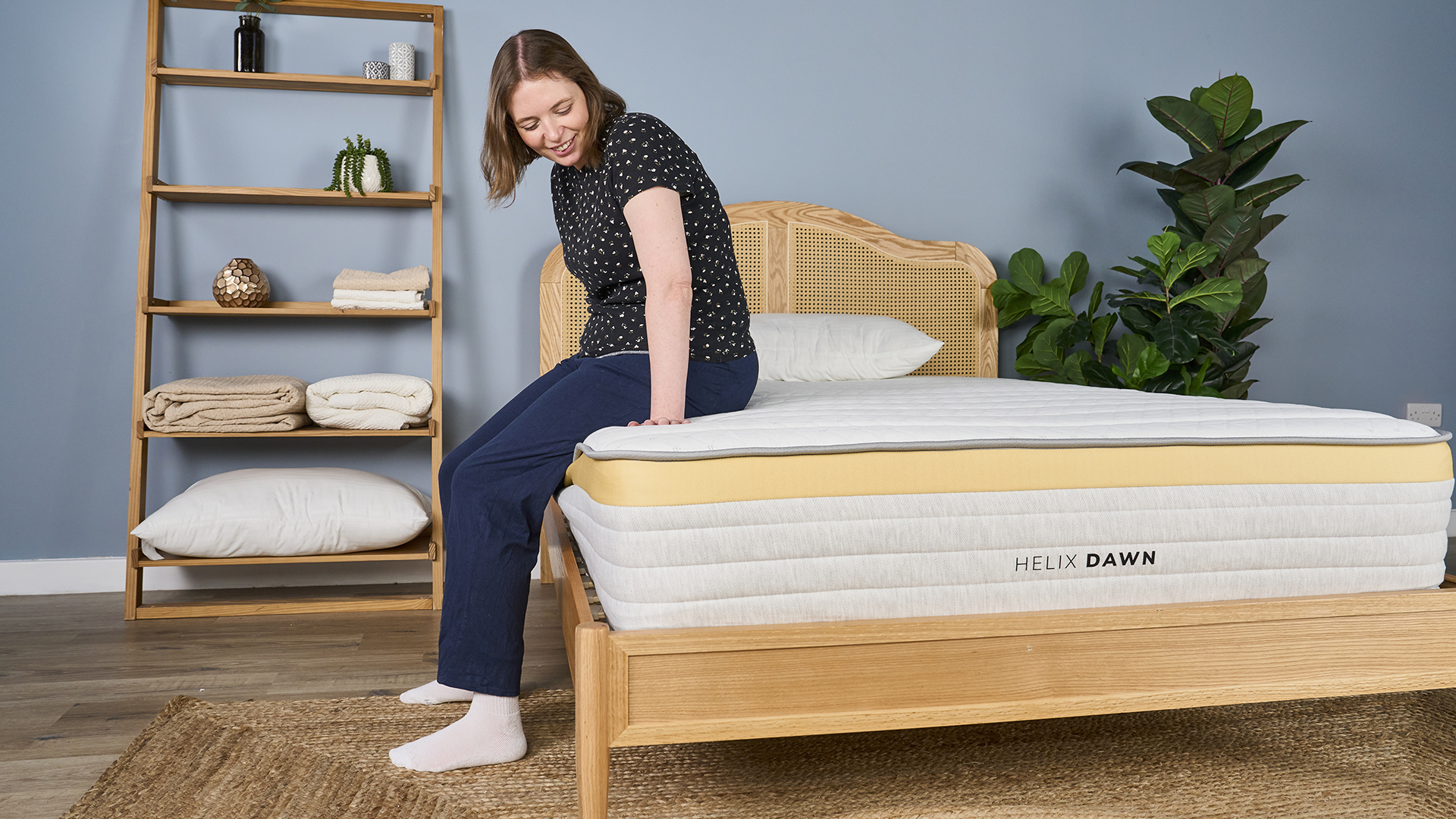
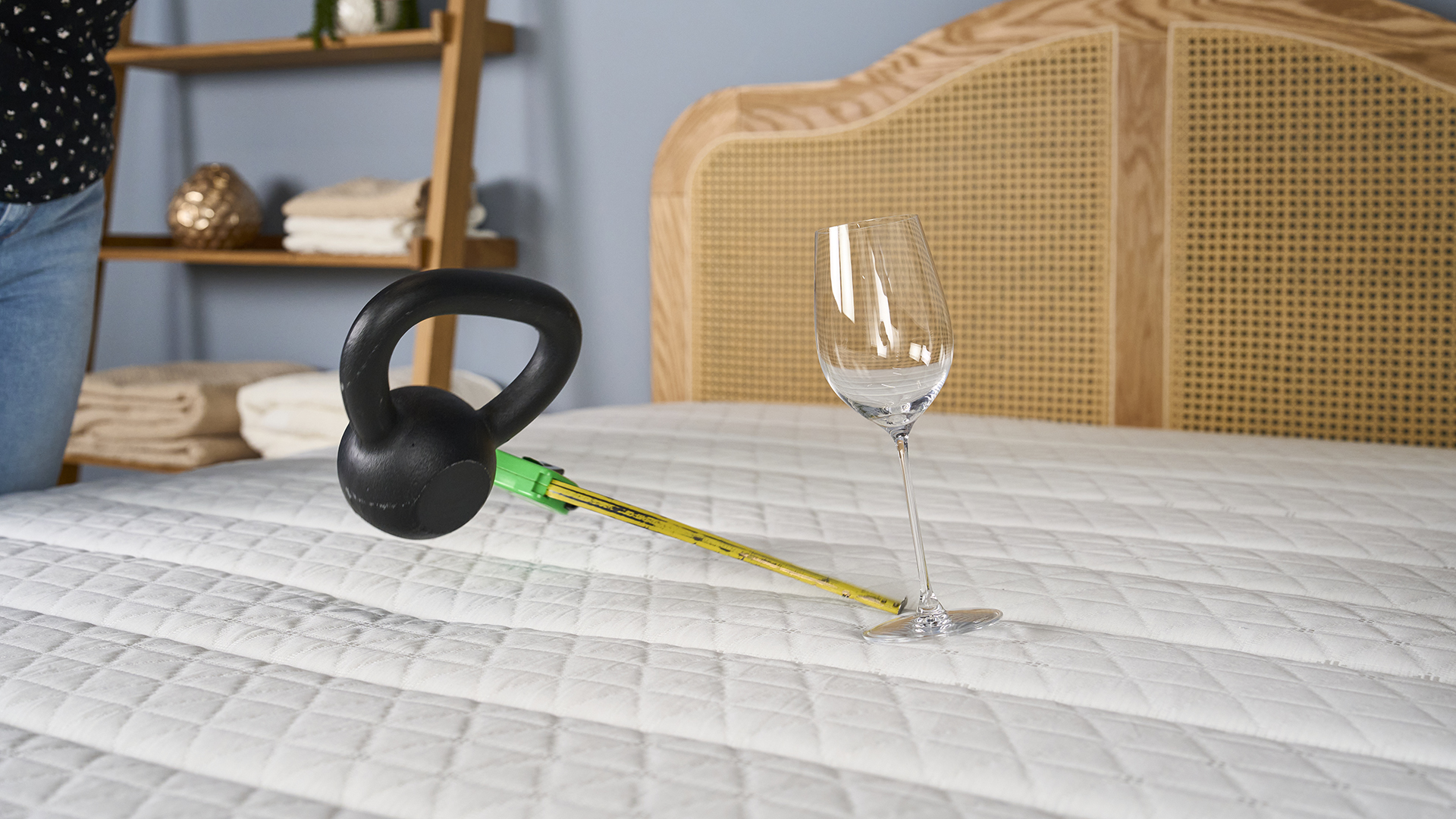
Our testing team includes side, back, stomach, and combination sleepers, as well as people with different body types. This allows us to get a well-rounded view of how each mattress performs for a variety of people.
We also run a series of objective tests, using weights. We can then compare these results to other mattresses we've tested. In addition, we analyze the public reviews for each mattress, to see how real-world customers are responding. We then rate the mattress out of five, based on the data collected and the performance compared to other mattresses we've reviewed.
You can learn more about our testing process in our mattress methodology. This testing focuses on the following three processes:
- Each mattress is tested across key areas: pressure relief, comfort, support, motion isolation, edge support, and temperature regulation.
- We analyze available user reviews to understand what customers think of the mattress, looking for recurring issues / features to explore in our tests.
- We fact check any support or comfort claims made by the brand.
How to choose the best mattress for you
The guide above contains our favorite mattresses. These are the ones our team have slept on, tested, and loved. But just because we think a mattress is the best doesn't mean it's going to be the right choice for you. So how do you find the perfect mattress?
Our number one piece of advice is to opt for a mattress with a sleep trial. A sleep trial gives you a period of time (typically 100 nights) to test the bed in your own home. If you don't like it, you can send it back for a refund. Some brands charge a small fee for these returns, but many offer it for free. Every bed in this guide includes a sleep trial.
When choosing a mattress, the primary factors to consider are:
- Your sleep position
- Mattress firmness
- Your weight
- Your sleep needs
- Your budget
How you prioritize these factors will depend on your own individual circumstances. If you have no health issues and a tendency to sleep well no matter where you are, a standard bed in a box (within your budget) might suit you fine. But if you often struggle to get a good night's rest, finding the right mattress can transform your sleep.
Sleep position
Sleep position is one of the first things to consider when buying a mattress. There are four common sleep positions: side, back, stomach, and combination (someone who regularly moves between positions). Understanding your sleep position can help you understand what mattress will suit your needs.
- Side sleepers need ample pressure relief at the shoulders, hips, and knees so tend to prefer medium feel mattresses with plenty of contouring. Memory foam mattresses are often a good choice
- Back sleepers benefit from medium-firm mattresses with strong lumbar support. Both hybrid and memory foam mattresses can suit back sleepers, but avoid softer foams.
- Stomach sleepers require strong support at the hips to keep the spine comfortable. Opt for medium to medium-firm mattresses if you have a lighter build, or a medium-firm to firm mattress if you have a heavier build.
- Combination sleepers need a mattress to suit different sleep styles, and medium-firm hybrid and all-foam mattresses tend to be good all rounders. Good motion isolation is another priority, so when you move around you don't wake anyone else in the bed.
Mattress firmness
Mattress firmness refers to how hard or soft a mattress is. We judge it on a scale of one to 10. One refers to a mattress that's marshmallow soft, while 10 is as hard as a rock. These ratings are subjective (weight plays an important role here, which we'll discuss below), so when determining firmness we ask a range of sleepers with different body types and preferences how they experience the bed.
There's no good or bad firmness rating, and no easy answer to the question 'how firm should a mattress be?' Let's take a look at the different firmness ratings and who they benefit:
1 to 3.5 out of 10: These are super soft mattresses that you really sink into. Mattresses this soft are typically best for lightweight side sleepers who enjoy feeling 'hugged' by the bed, but it's important to ensure you're still getting enough support. Excess sink can result in back ache.
4 to 4.5 out of 10: Medium-soft mattresses, these beds have plenty of contouring but shouldn't leave you feeling like you'll fall through the mattress. These mattresses suit side sleepers with light to average builds.
5 to 6.5 out of 10: True medium mattresses that balance contouring with support. Side sleepers and back sleepers can both benefit from a medium mattress and they're also good for bed sharers.
7 to 7.5 out of 10: These medium-firm beds prioritize strong support and often have minimal sink. Good for sleepers with back pain and front sleepers. However, side sleepers might wake up with numb arms on these beds.
8 to 9.5 out of 10: Firm mattresses are often beds you lie on top of, with almost no contouring but plenty of support. They're good for stomach sleepers who need stability at the hips, plus those with a bigger build.
10 out of 10: Extra firm mattresses are rare and rock hard — you might feel like you're sleeping on the floor. Some back and stomach sleepers prefer this type of build, but it's a divisive feel.
Weight
Modern mattresses are typically multi-layered designs. The upper layers are the comfort layers, providing contouring and pressure relief. The base layers contribute to the overall stability and support of the mattress.
Sleepers with a lighter build will often benefit from the extra cushioning of a softer mattress, while those with an average build tend to prefer medium to medium-firm mattresses. Sleepers with a heavier build (over 230lbs), benefit from the superior full-body support of a firm mattress.
Sleep needs
Sleep needs vary from person to person, so it's important to consider what you prioritize in your sleep. Bed sharers should look for a mattress with good motion isolation, which will absorb movement so you can't feel your partner toss and turn.
Hot sleepers need a mattress with cooling features, to help absorb and dissipate heat throughout the night. Sleepers with back pain should consider a bed with enhanced lumbar support, while those with limited mobility can benefit from strong edge support.
The right mattress won't stop insomnia or cure your back pain, but it can help you enjoy comfier rest.
Budget
No matter your budget, it's still important to remember the above factors when choosing your mattress. If you have a tight budget, consider the features that are most important to your sleep needs — whether that's contouring or support or a breathable build — and use that to find a mattress within your price range that's right for your sleep style.
Mattress buying advice
A good mattress can be an investment purchase, and as sleep is essential to our wellbeing, it's important to get it right. Here our team of sleep experts and mattress testers answer all your questions, including what the different types of mattress are, how to find the right mattress for you, and when is the best time to buy a mattress.
What are the different types of mattress?
Mattresses come in many different forms and are made with many different materials. There's no singular 'best' mattress type — we should know, we've tested every one we can get our hands on.
Below are the most common types of mattress for both beds in a box (which come rolled and packed) and traditional flat mattresses, alongside their pros and cons.
Hybrid mattresses
Hybrid mattresses contain layers of springs and cushioning, making them perhaps the most diverse bed type. Most hybrid mattresses follow a similar build: top layers of comfort materials (often foams but sometimes wool or other fibers) followed by a spring base (or multiple layers of springs.) So depending on the design, a hybrid can be rock hard or marshmallow soft.
The use of coils gives hybrid mattresses a bouncier feel than most all-foam beds. This has some advantages — hybrid mattresses tend to be easier to move around on — but it can result in potentially disruptive motion transfer.

But two areas where hybrids typically excel are support and breathability. That's thanks to the spring base: it keeps the body lifted while allowing hot air to circulate and cool.
Memory foam mattresses
Memory foam mattresses are made using multiple layers of polyurethane foam (actual 'memory foam' is only found in the top layers.) They're best known for their cushioning — traditional memory foam delivers a 'body hugging' feel that can relieve aches and is often recommended for side sleepers.
But memory foam is a surprisingly diverse material and firmer foam beds are available for back and stomach sleepers. Memory foam also excels at motion isolation (trapping disruptive movement), making it a popular choice for bed sharers. And it's typically a more affordable material; memory foam mattresses are often cheaper than comparable hybrids.
However, memory foam has some downsides, including a tendency to trap heat — hot sleepers should opt for an all-foam mattress with cooling infusions. And support can be a weakness (literally) as some soft foam beds have a quicksand sink-in feel.
Latex mattresses
Latex foams are often used in eco-friendly mattresses, as they're naturally derived from rubber trees (synthetic latex is also available.) Latex foams are often bouncier than memory foam and lack the soft 'give', making them best for back and stomach sleepers. Latex is also naturally breathable.
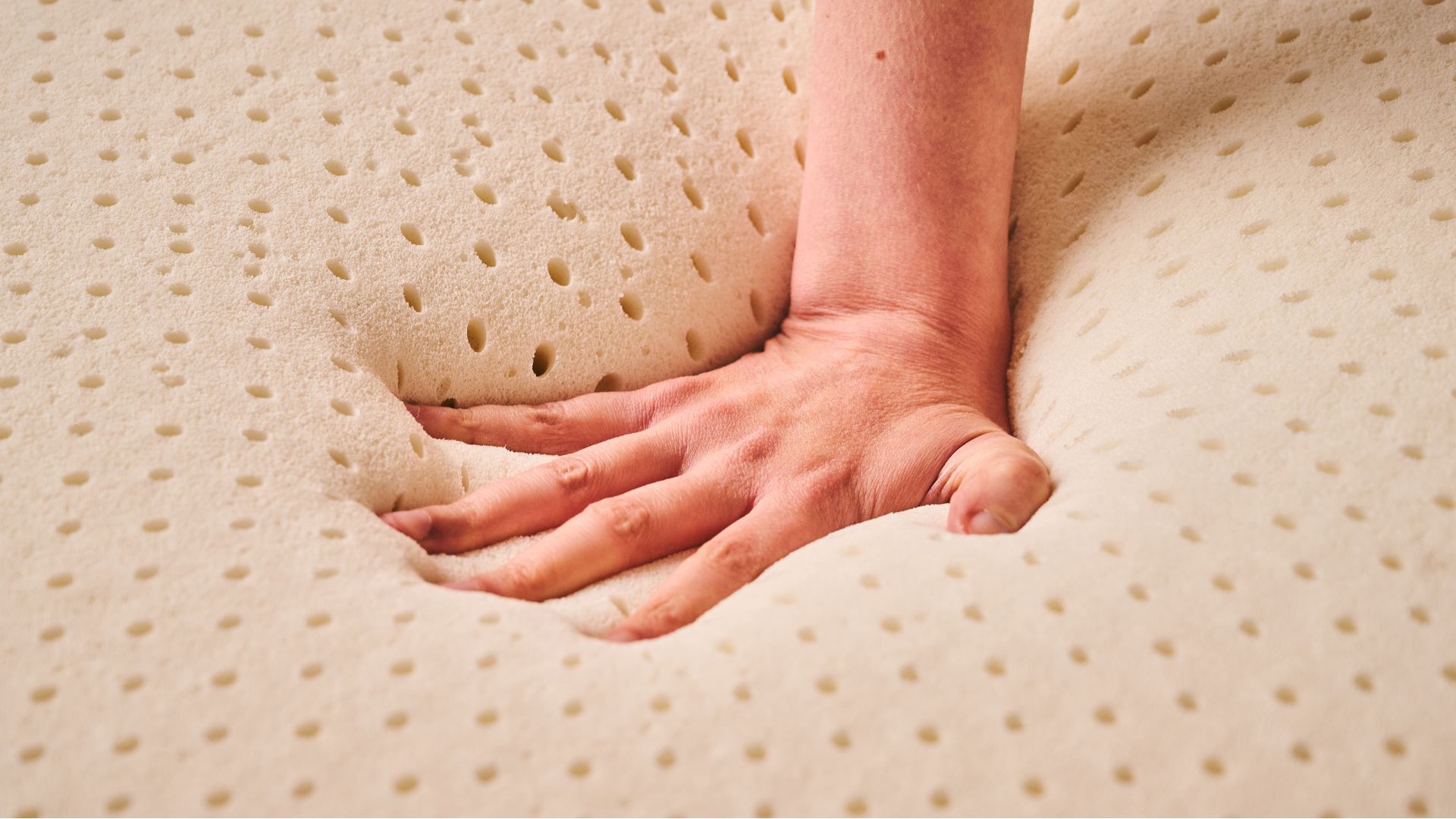
While a few all-foam latex mattresses do exist, you'll typically find latex acting as a comfort layer in a hybrid bed. Latex is among the most expensive mattress materials but it's also one of the most durable. You get a lot of bang for your buck.
Innerspring mattresses
Innerspring mattresses are a traditional bed type that use coils to create a buoyant and breathable feel. With limited cushioning innerspring mattresses are often recommended for back or stomach sleepers, as well as those on a budget — these are often the most affordable mattresses.
Innerspring beds are becoming increasingly usurped by hybrids, which have more diversity. However, you can still find innerspring designs from budget retailers and mattress stores.
Smart mattresses
More and more sleep brands are turning to high-tech solutions to help customers snooze better, with integrated sleep tracking, adjustable firmness and even built-in temperature control now common features in smart beds.
This is a broad category that encompasses a variety of technological sleep solutions but most smart mattresses have at least one thing in common: a high price tag.
What mattress type is best?
There is no mattress type that's better than the other, as each model can suit a different sleep style — the best mattress for you won't necessarily feel as comfortable for someone else. For this reason, ensure you always get a mattress trial, so you can test the bed over the course of several weeks and see if it's right for you.
With that said, we know from our testing that there are some general trends in comfort. Lightweight side sleepers typically benefit from soft to medium mattresses, often with ample cushioning. People of average body weight (around 130 to 230lbs) tend to prefer medium-firm mattresses, while those with heavier builds should consider firm mattresses.
Where is the best place to buy a mattress?
It used to be unusual to buy a mattress online, but the rise of beds in a box has made it much easier to buy a high-quality mattress online and get it delivered straight to your door. In our experience, the best place to buy a mattress is online, where you can find direct to consumer brands offering excellent prices on beds for every sleep style.
Without the cost of a brick and mortar store, online mattress brands can save money — and this saving is passed onto the consumer. Some sleep brands also take a dual approach, selling the full line up of mattresses online and a few select models in store.
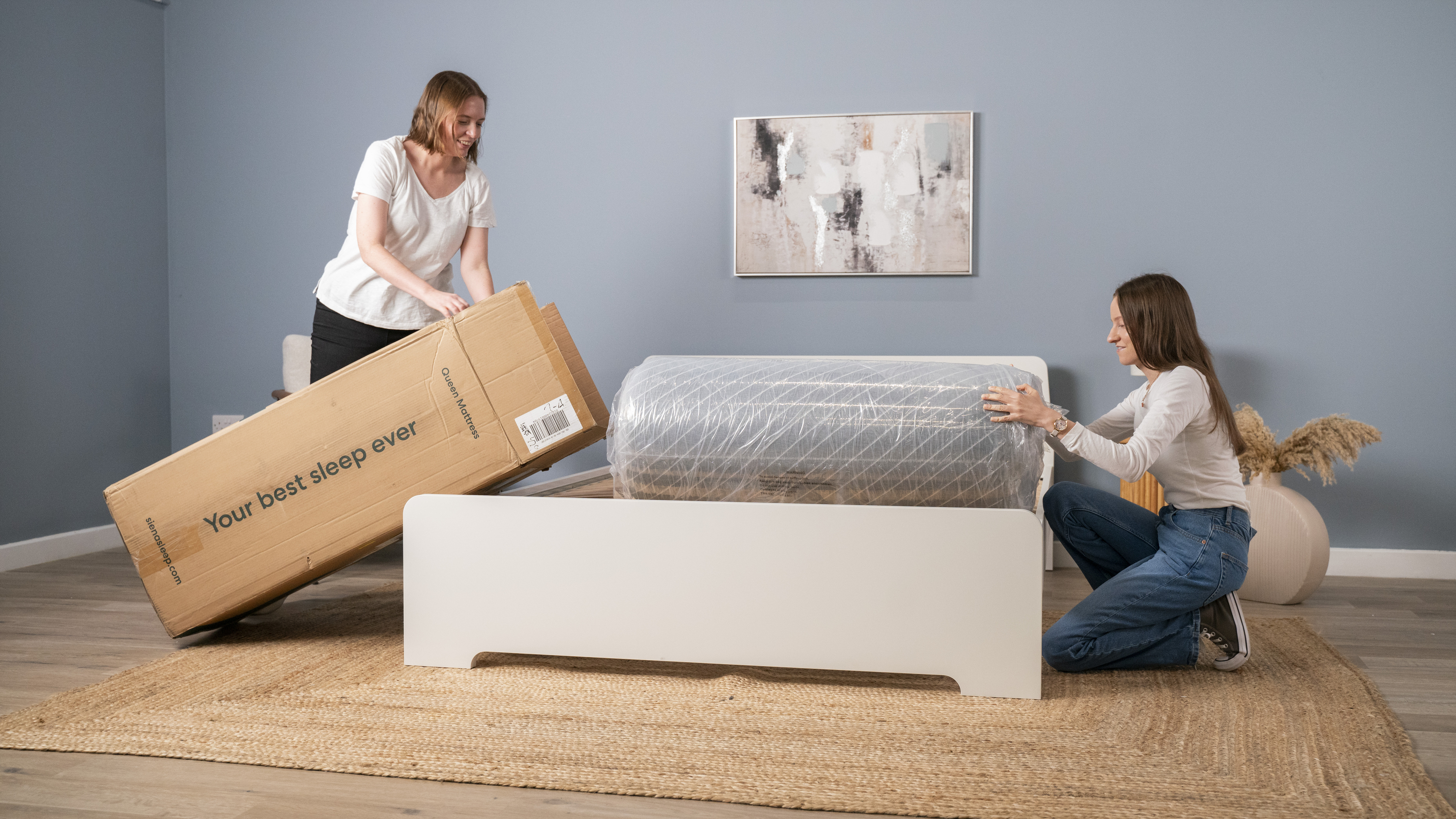
Most online-only mattress brands sell 'mattresses in a box', in which the bed is compressed, wrapped in plastic, and boxed. Once removed from the packaging the mattress will spring back into place and gradually inflate to its full height.However, some brands (including Simba) do sell flat mattresses. Often these beds are sold with white glove delivery, so you can avoid the setup process.
There are also third-party online mattress retailers, where you can sometimes score a better price than shopping direct from the manufacturer. However, in our experience the brand will typically offer superior benefits, such as trial and warranties, plus better after care.
If customer service is a priority, there are definite advantages to shopping in store. While many online mattress retailers offer live chat boxes and phone help, they're not always reliable.
Wherever you choose to buy your mattress, don't forget the sleep trial. A trial period of 30 days minimum allows you to really get to know the mattress, so you know it's going to be right for you.
When is the best time to buy a mattress?
The best time to buy a mattress is traditionally Black Friday, as this is when we expect all the major sleep brands (plus third-party retailers) to run a competitive sale. By timing your purchase to coincide with the Black Friday / Cyber Monday period, you should have a large variety of discounted mattresses to choose from.
In recent years, however, Black Friday has seen competition from the bank holiday sales. Easter, Boxing Day and New Year's sales often bring reliable discounts from top-rated mattress brands, meaning you don't have to wait until November to upgrade your sleep for less.
In fact, you don't necessarily have to wait for a sales period to save at all. For example, the Nectar mattress sales are good year-round and while the Emma mattress sales vary from month to month, a bank holiday doesn't necessarily equal a bigger discount.
Finally, if you're looking for a budget-friendly bed for a guest room, you might want to check out the Amazon Prime Day sales. These typically run twice a year (once at the start of summer and once in autumn) and can bring some major discounts.
What are the best mattress brands in the UK?
We've tested beds from all the best and most popular brands in the UK, including Simba, Emma, Panda, Nectar, DreamCloud, Eve, and Tempur-Pedic. These brands all offer mattresses to suit a variety of sleep styles and budgets, with regular sales throughout the year.
It's a Simba mattress currently occupying our top spot, and Simba is one of our favorite UK mattress brands (it's also recently expanded to the US). Simba Sleep UK is a B Corp Certified brand and the beds are designed and manufactured in the UK. Simba mattresses come with a 200-night trial and a 10-year guarantee.
How often should you change your mattress?
In this guide we hope to help you find a new bed when your old mattress has reached the end of its life — but how often should you replace your mattress? This depends on a number of factors, but on average your mattresses should be replaced every six to ten years.
As a mattress ages it begins to lose support. Dips start to appear and this sagging leads to back and neck ache. Older mattresses also have cosmetic issues, such as stains. While this might appear to impact your sleep, it could indicate that your mattress has mold or mildew.
Here are some common signs that your mattress needs replacing:
- You've owned it for at least six years (or four years, for a cheap bed)
- You're wake up in pain most mornings
- You wake up in pain during the night
- Your allergies worsen as soon as you climb into bed
- You feel like you might sink straight through the mattress
- You've noticed dips and sags in some areas of the bed
- There's an unusual smell and dark stains
- It's started making a noise (or more noise)
- Your body has changed in recent years and the mattress no longer offers the right support
- Your sleep needs have changed and your bed can't keep up
Regular mattress cleaning and maintenance can extend the longevity of your bed, as can rotating your mattress (be aware that some mattresses with zoned support shouldn't be rotated.)
As a general rule, latex mattresses have the longest lifespan, while a good memory foam mattress is typically more durable than an equivalent quality hybrid. Innerspring mattresses often have a short lifespan.
How much should I spend on a mattress?
At Tom's Guide we think mattresses are an investment that will pay you back with good rest — for that reason, we recommend paying what you can afford for a quality mattress.
It is possible to pick up a good mattress for less than £300 for a double, but expect to make certain concessions. These mattresses typically lack the longevity and comfort of pricier builds. They tend to be best for guest rooms and teenage bedrooms.
Increasing your budget to the mid-range category opens you up to a wider variety of mattresses, made with better quality materials. We consider a mid-range mattress around £400 to £600 for a double, while an upper mid-range mattress can set you back up to £800. Although more money upfront, these beds will typically stay comfortable and supportive for longer.
A premium mattress costs upwards of £800 for a double (and this is where you'll find our top pick, the Simba Hybrid Ultra). These mattresses tend to be the cream of the crop, although a high price tag doesn't necessarily indicate the best mattress for your sleep style.
Get instant access to breaking news, the hottest reviews, great deals and helpful tips.

Claire is a Certified Sleep Science Coach and the Managing Editor of Sleep at Tom's Guide. She curates our mattress guides and oversees our rigorous mattress testing procedures. Claire has over 16 years' product review experience and is connected to a wealth of globally renowned sleep experts including mattress designers and buyers, neuroscientists, and doctors of sleep medicine. As the Managing Editor of our Sleep and Mattress Team, Claire is responsible for all mattress and sleep content published on Tom’s Guide and is our expert on Saatva, DreamCloud, and Nectar mattresses. Claire is also certified to advise people on how to choose a mattress that suits their needs and budget, as well as helping them to create a nighttime routine and bedroom environment that helps them sleep better.
- Ruth JonesSenior Sleep staff Writer
